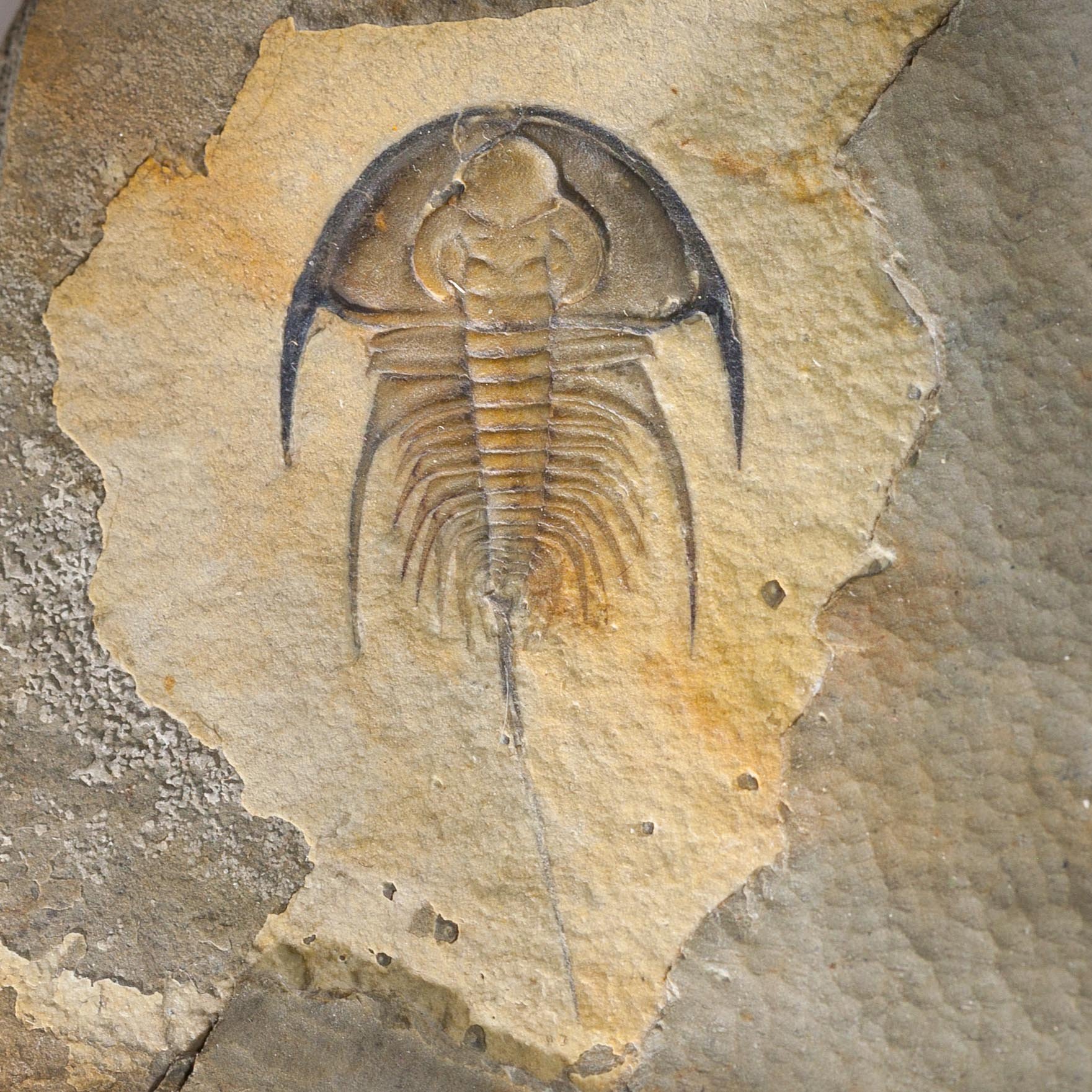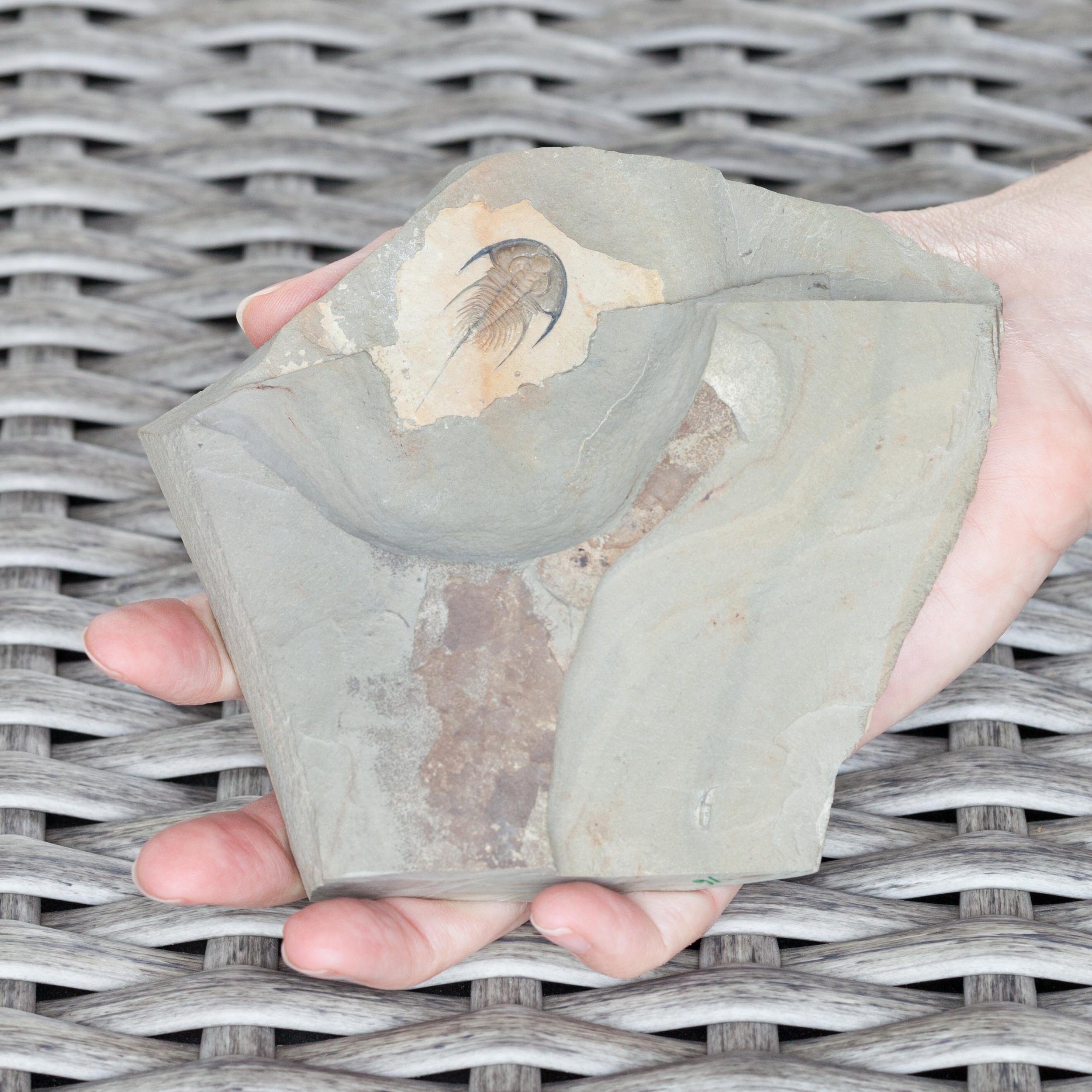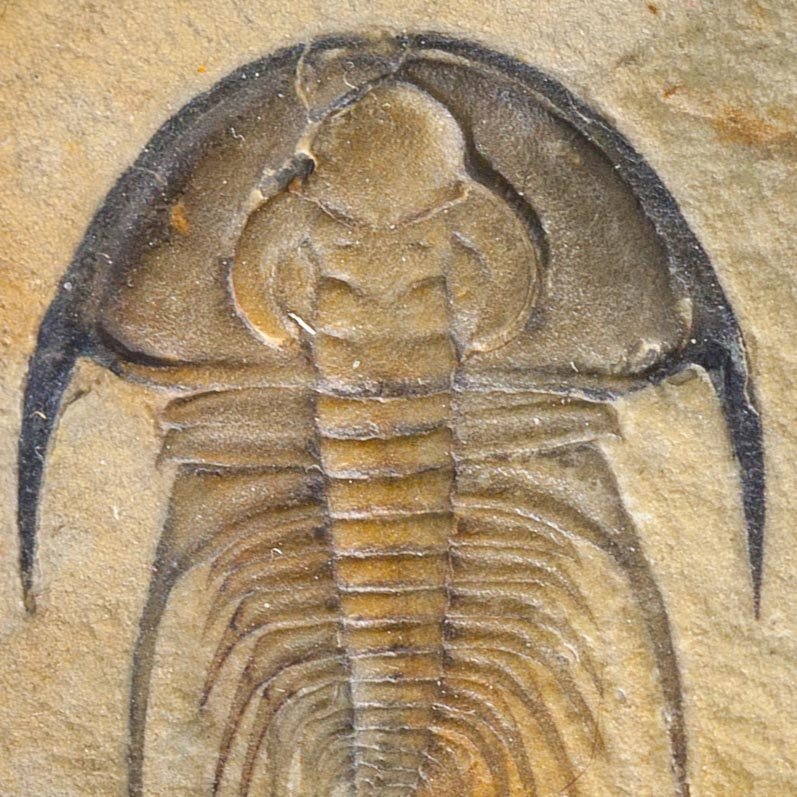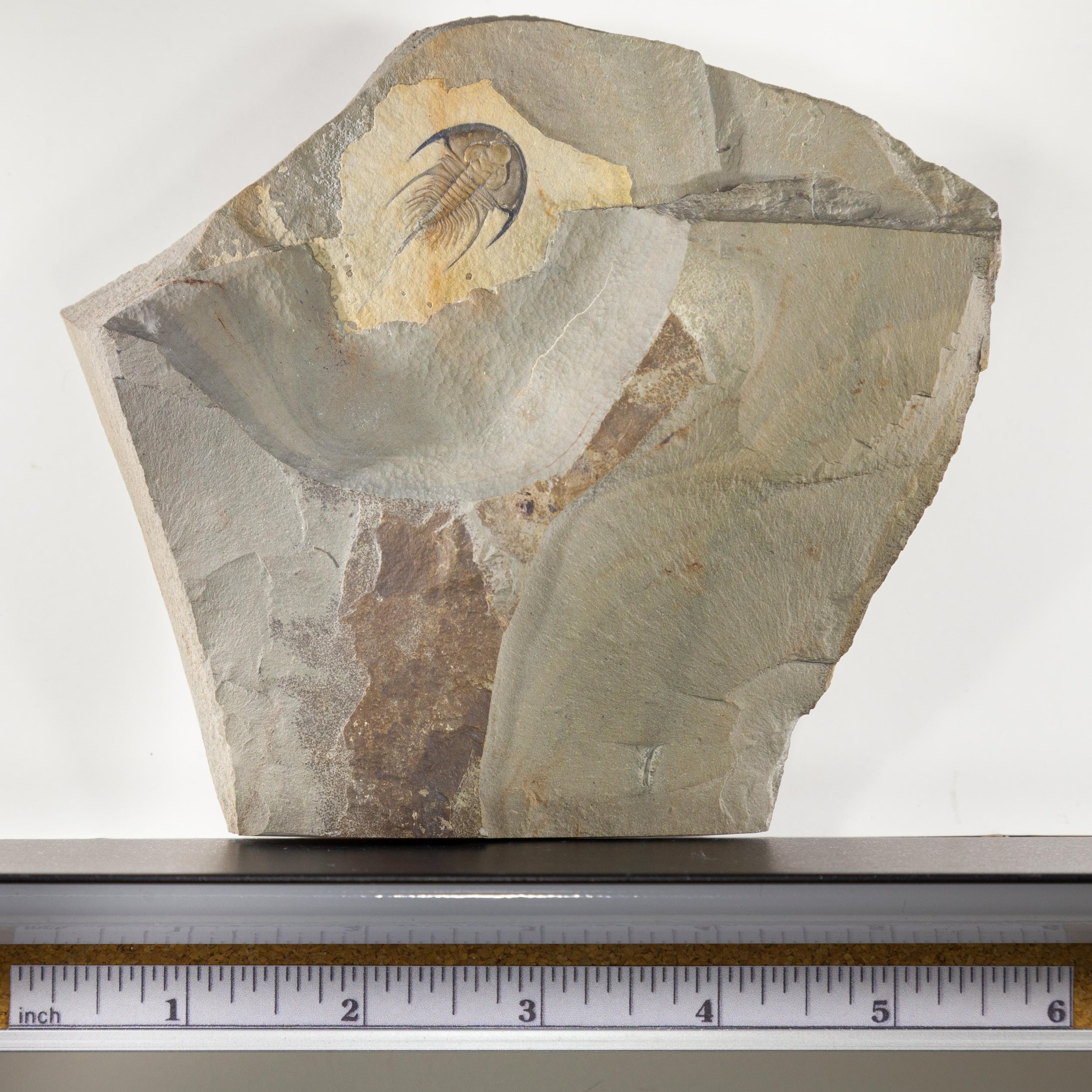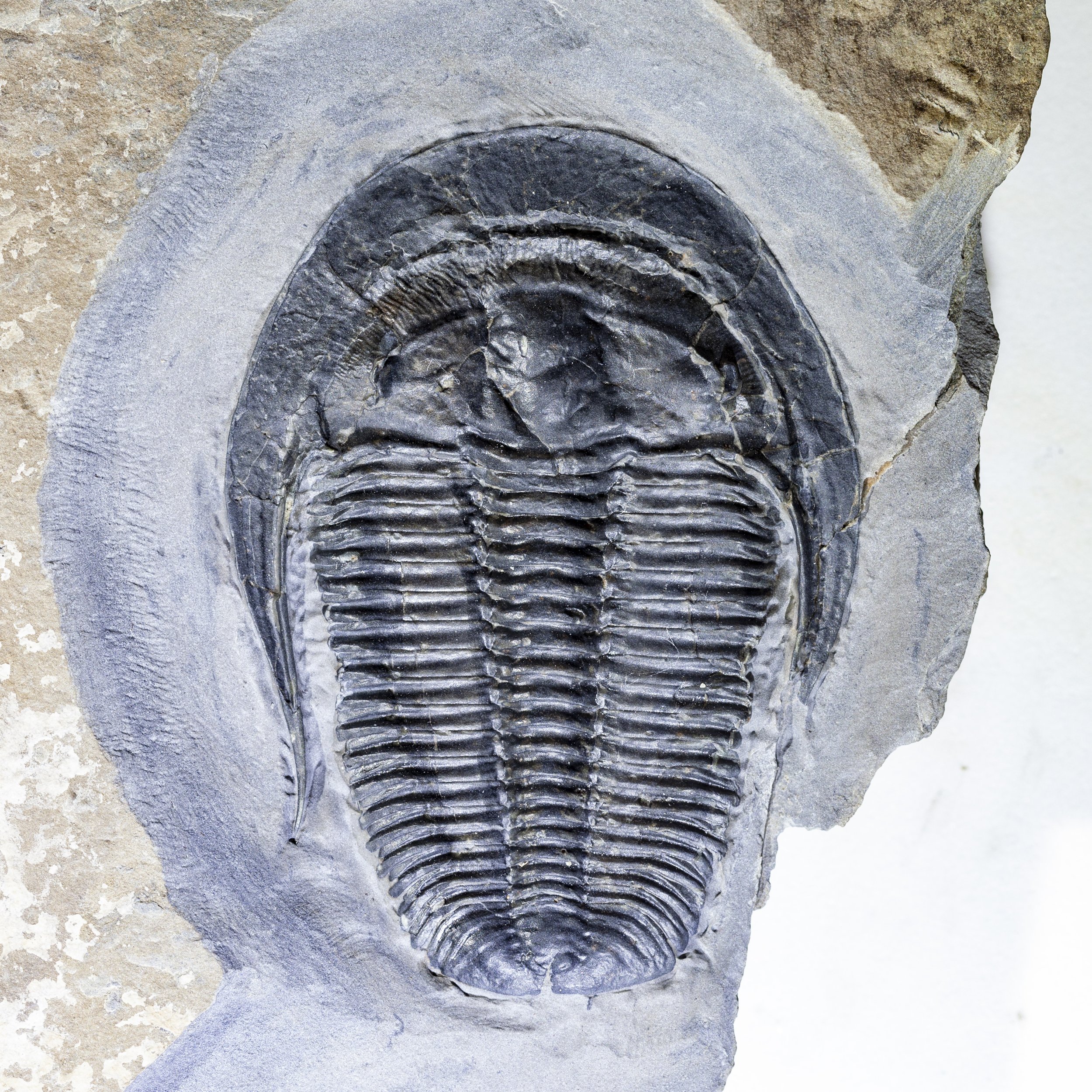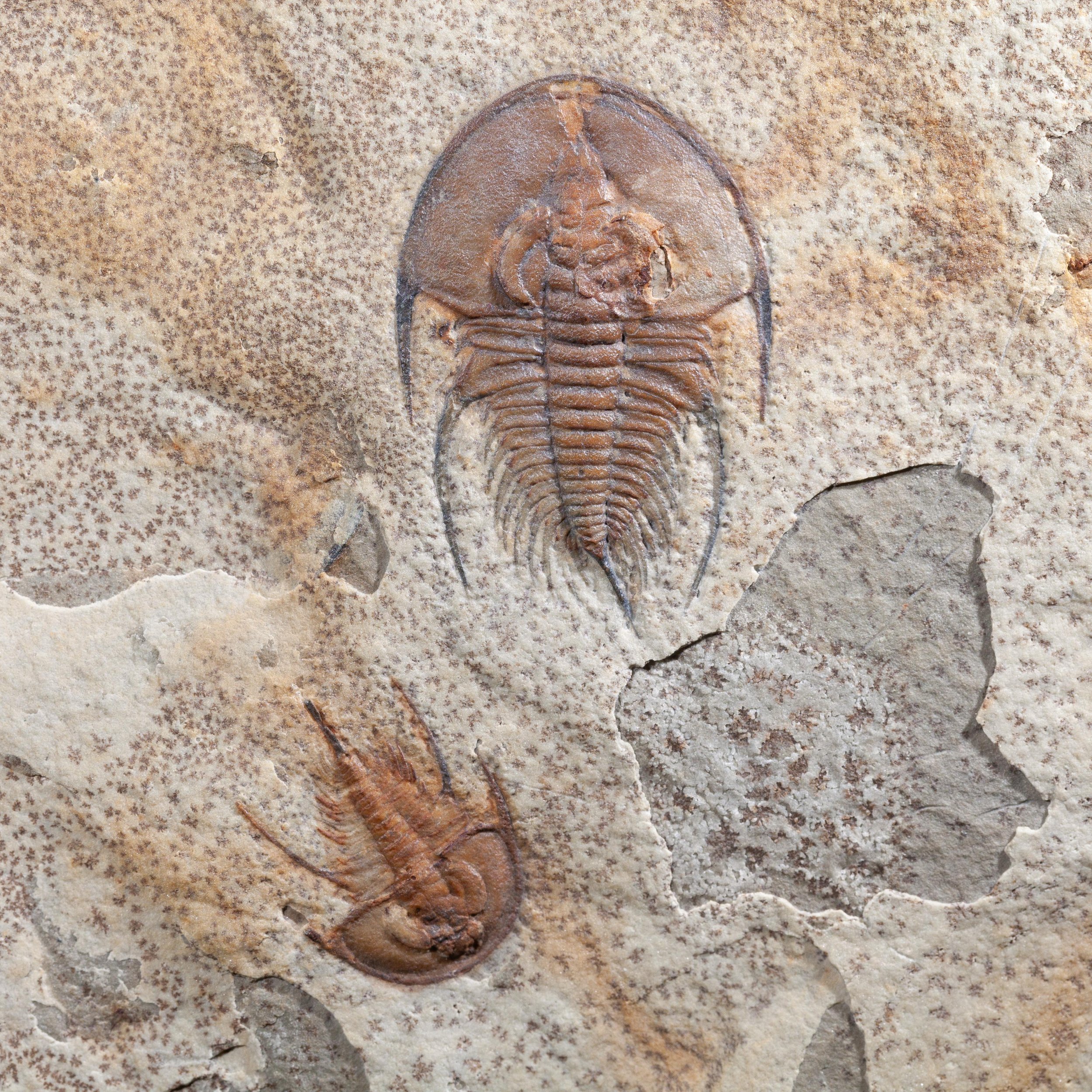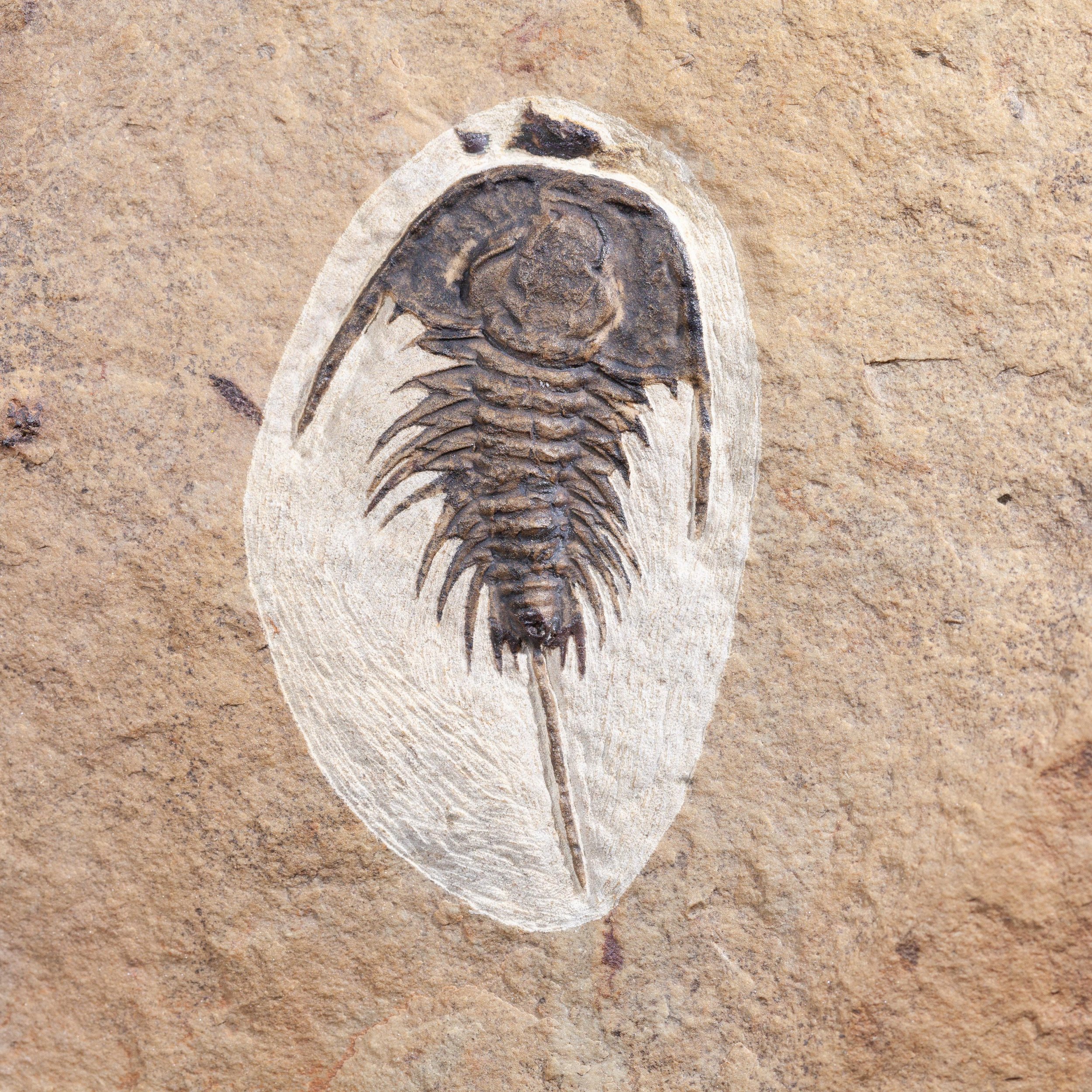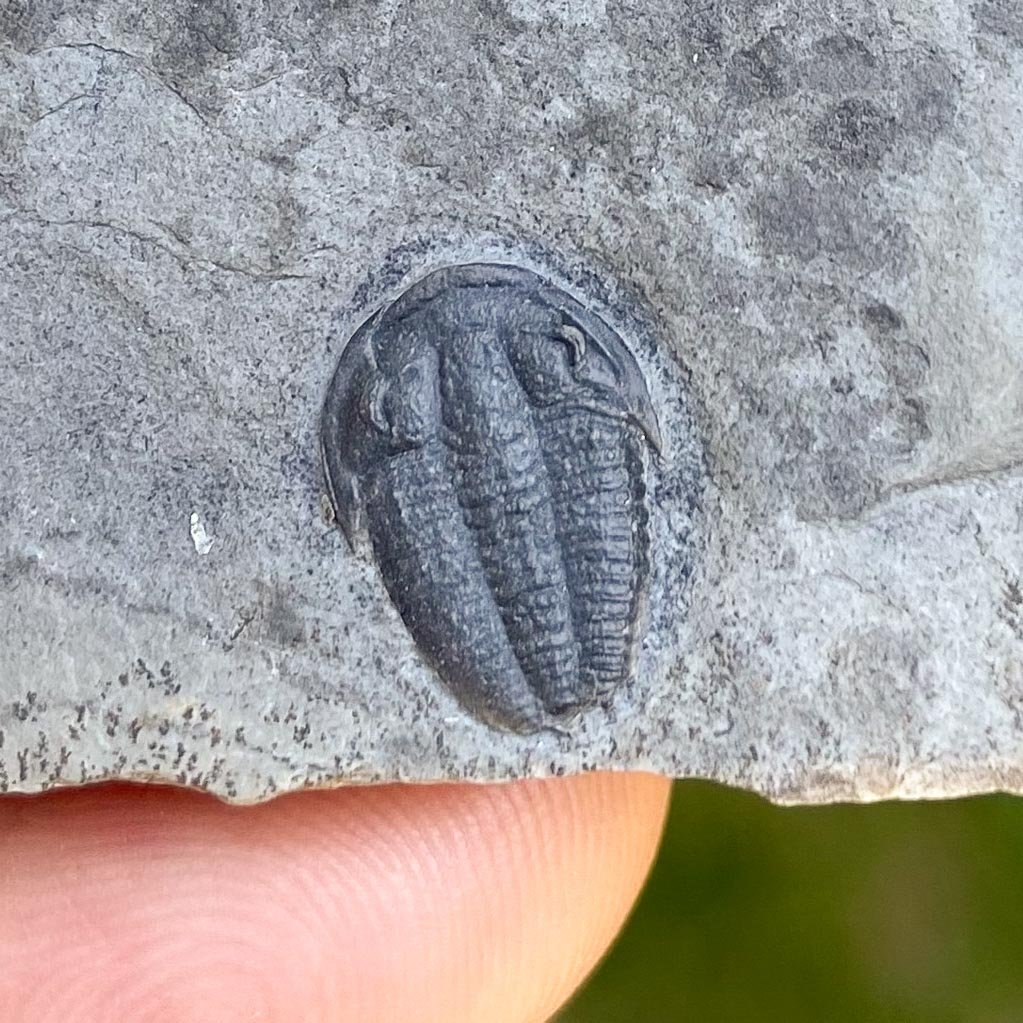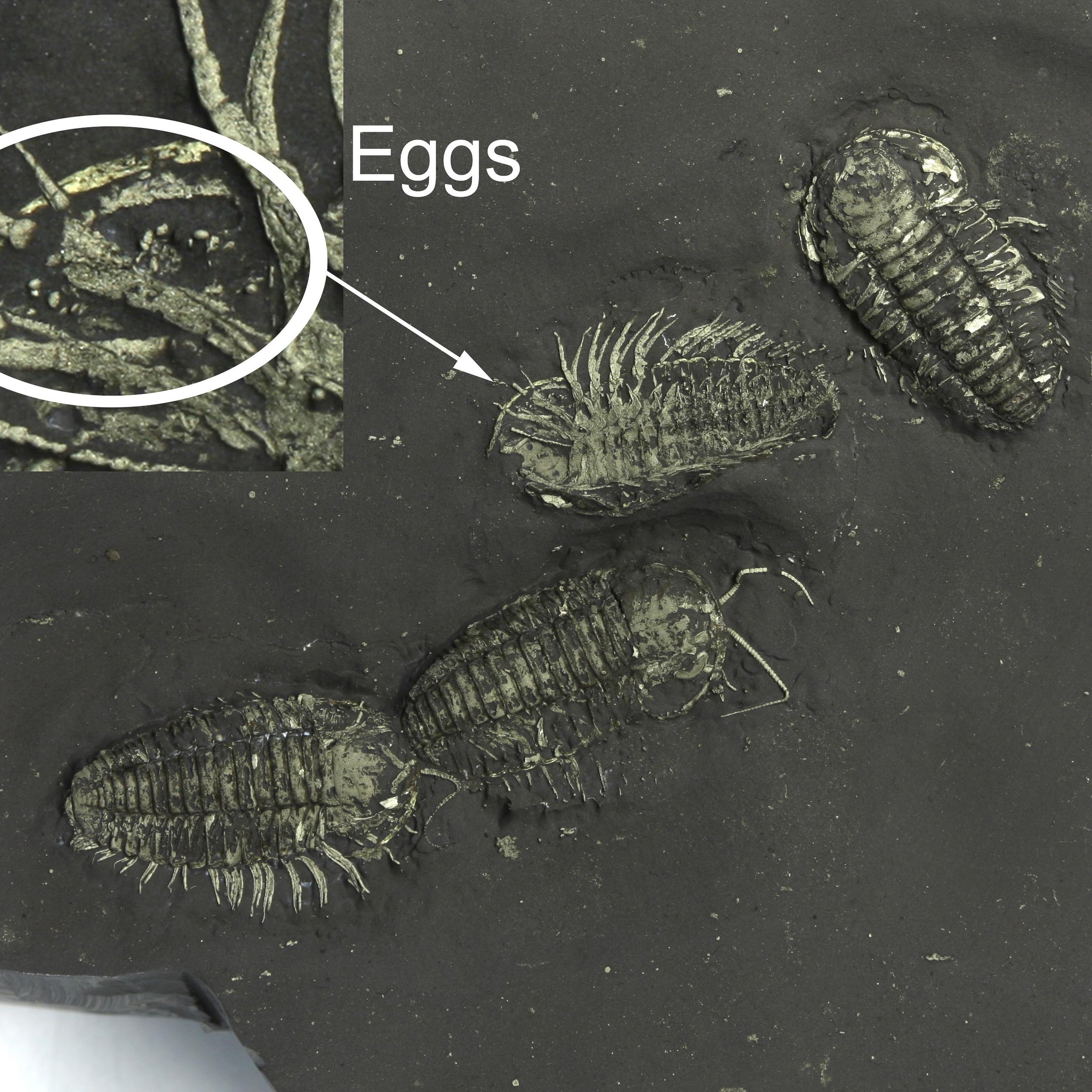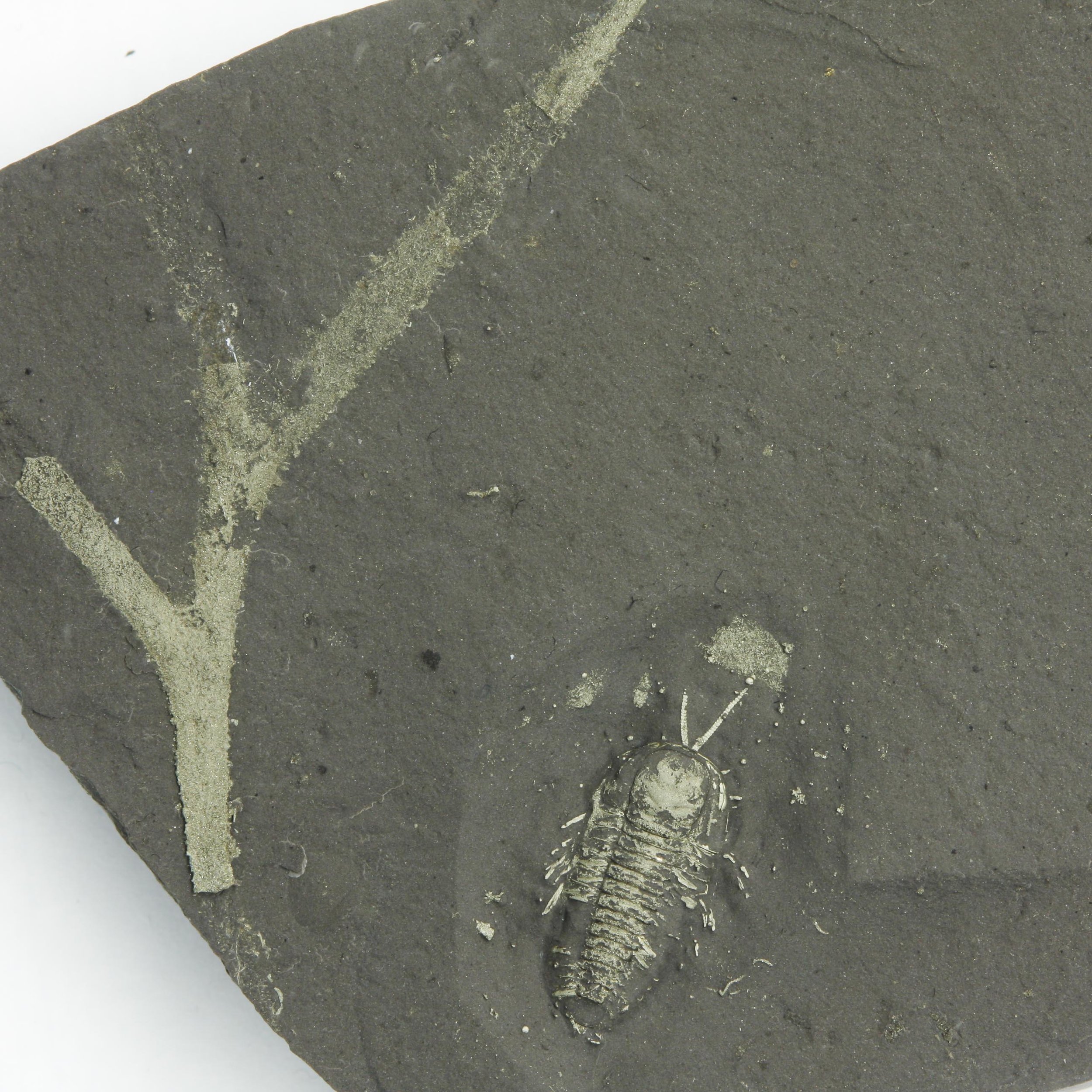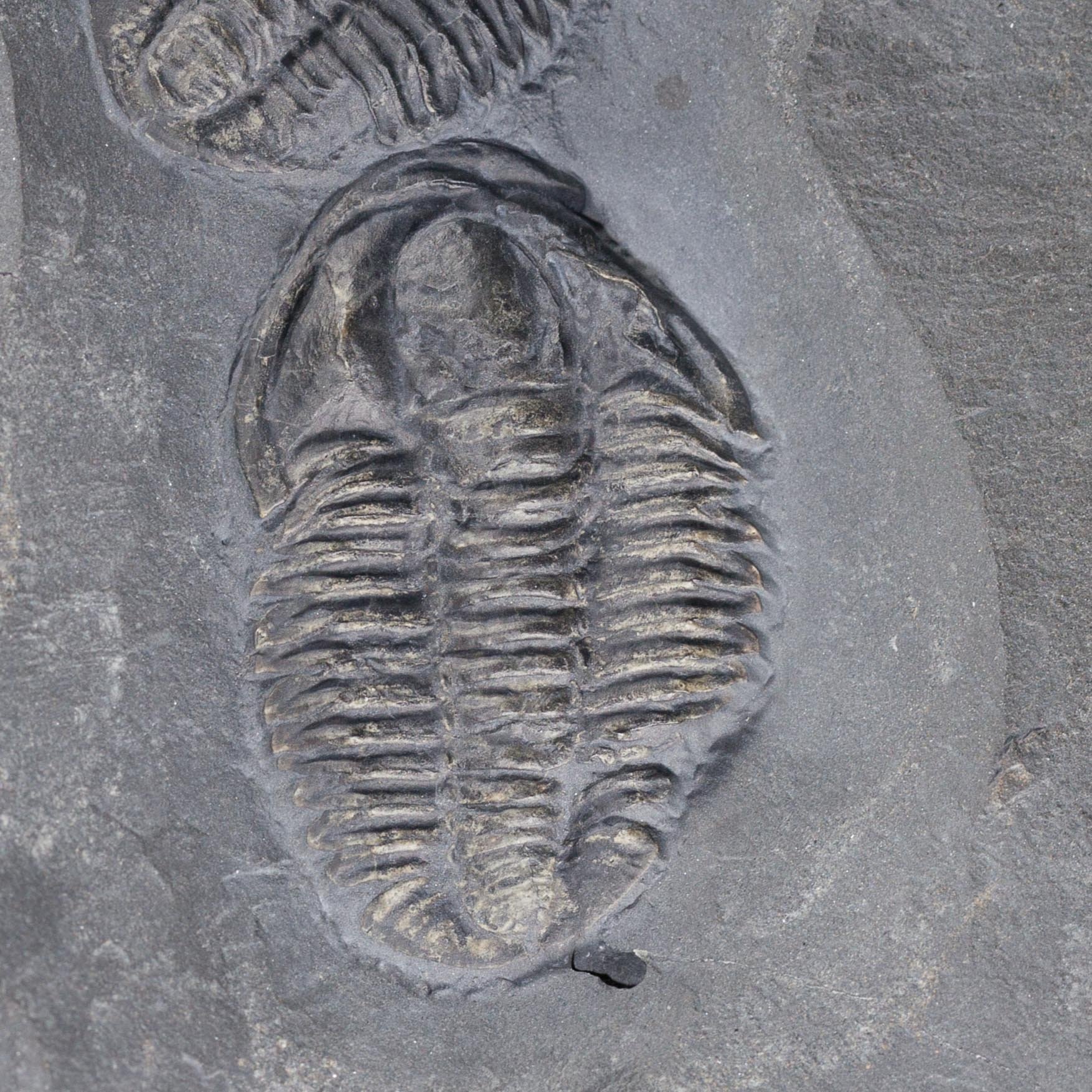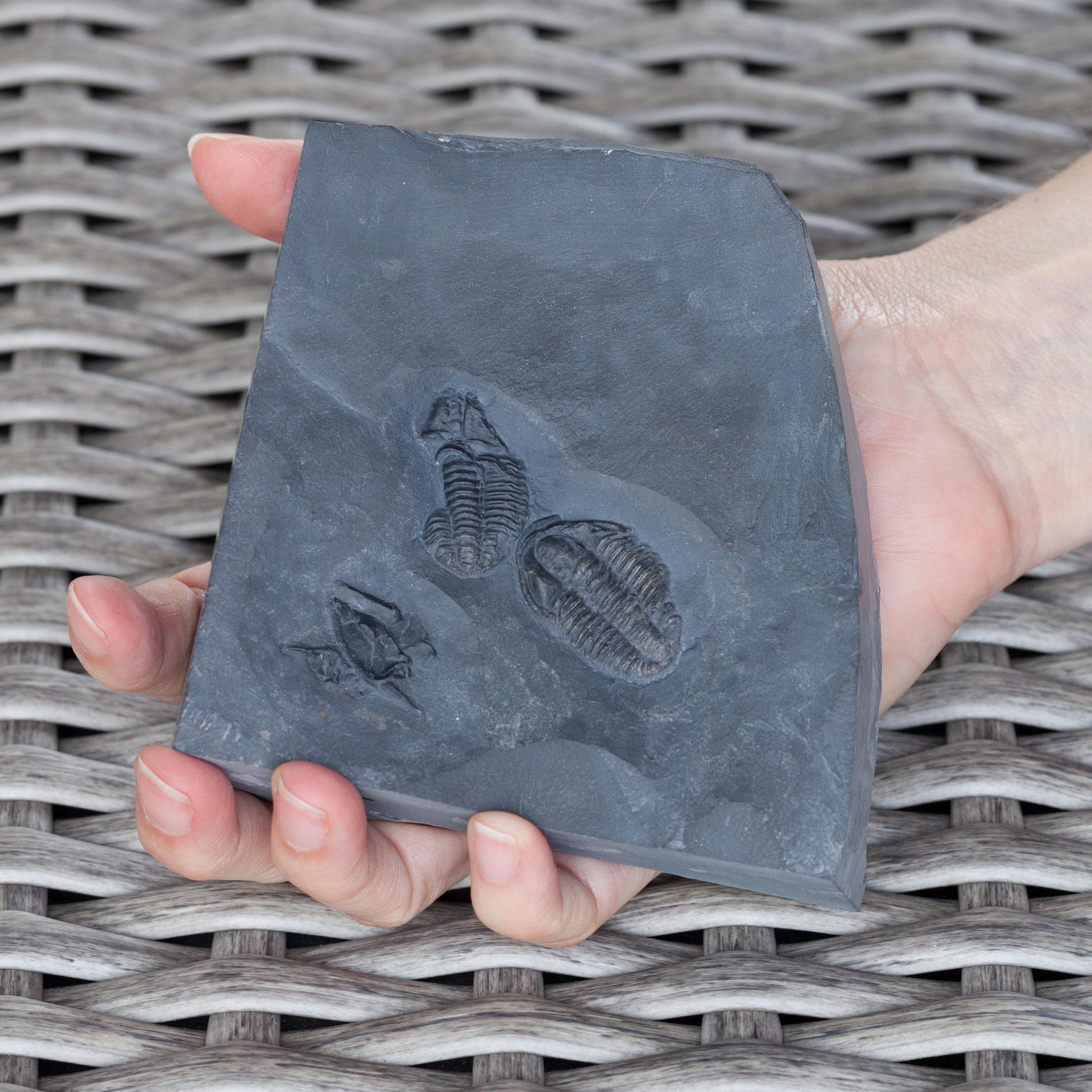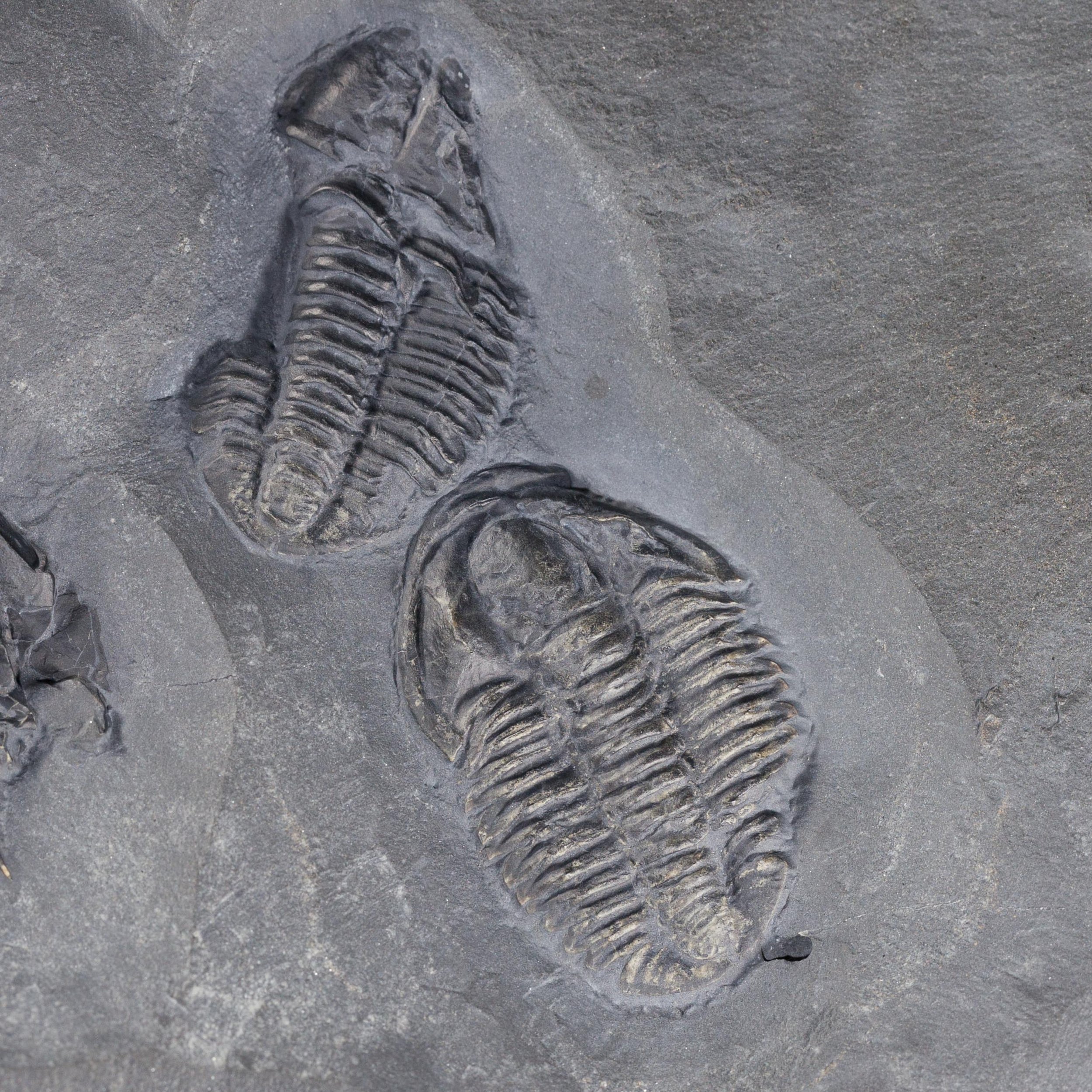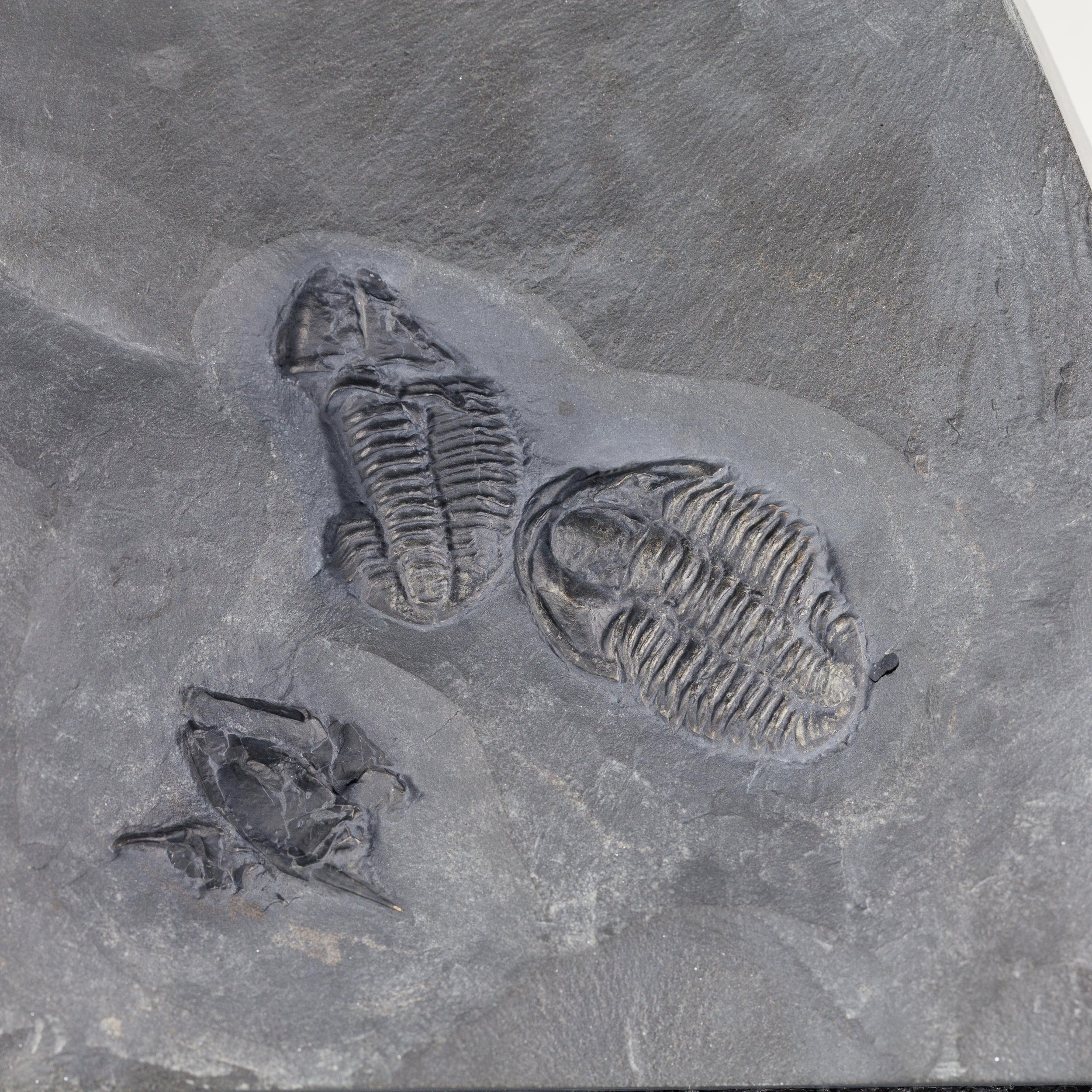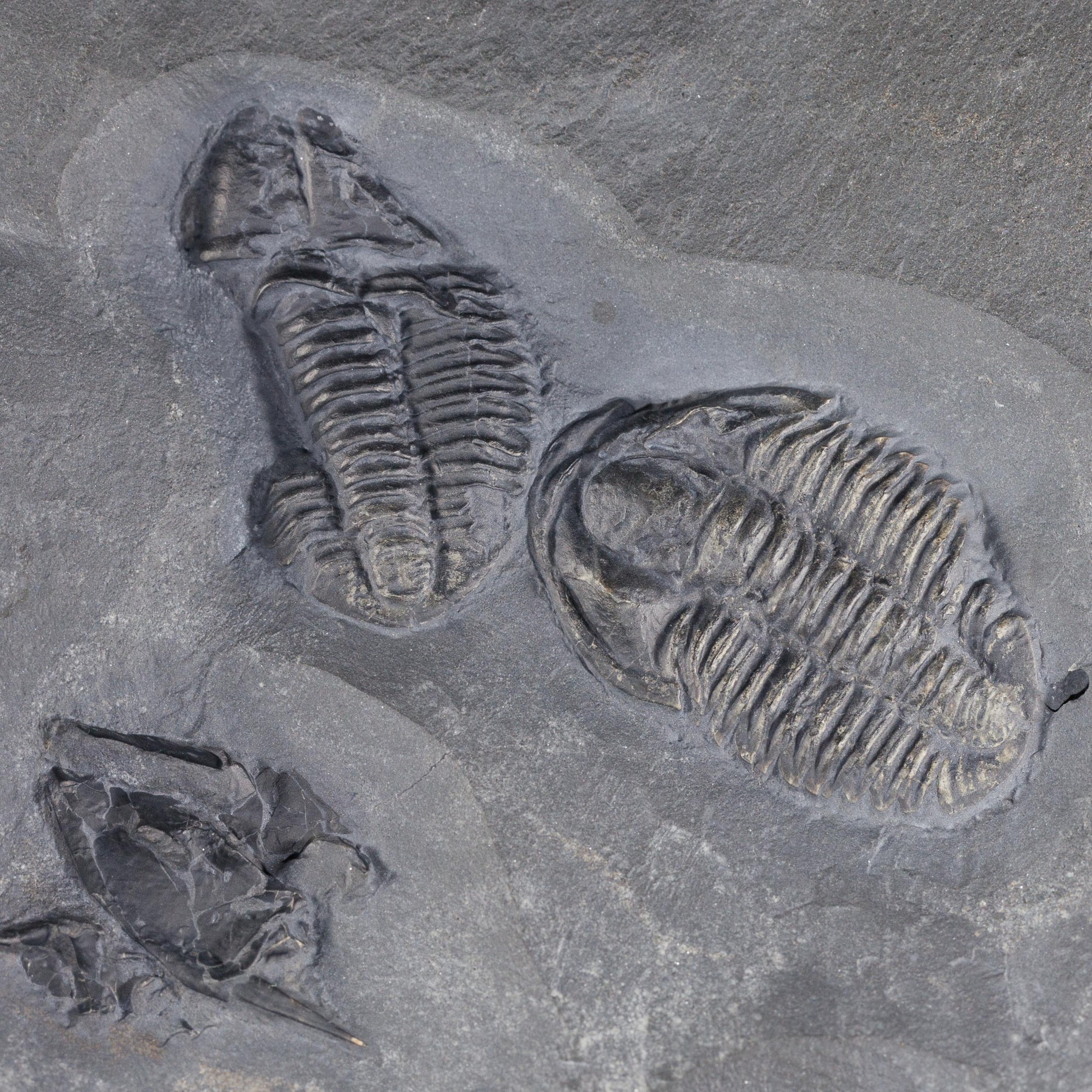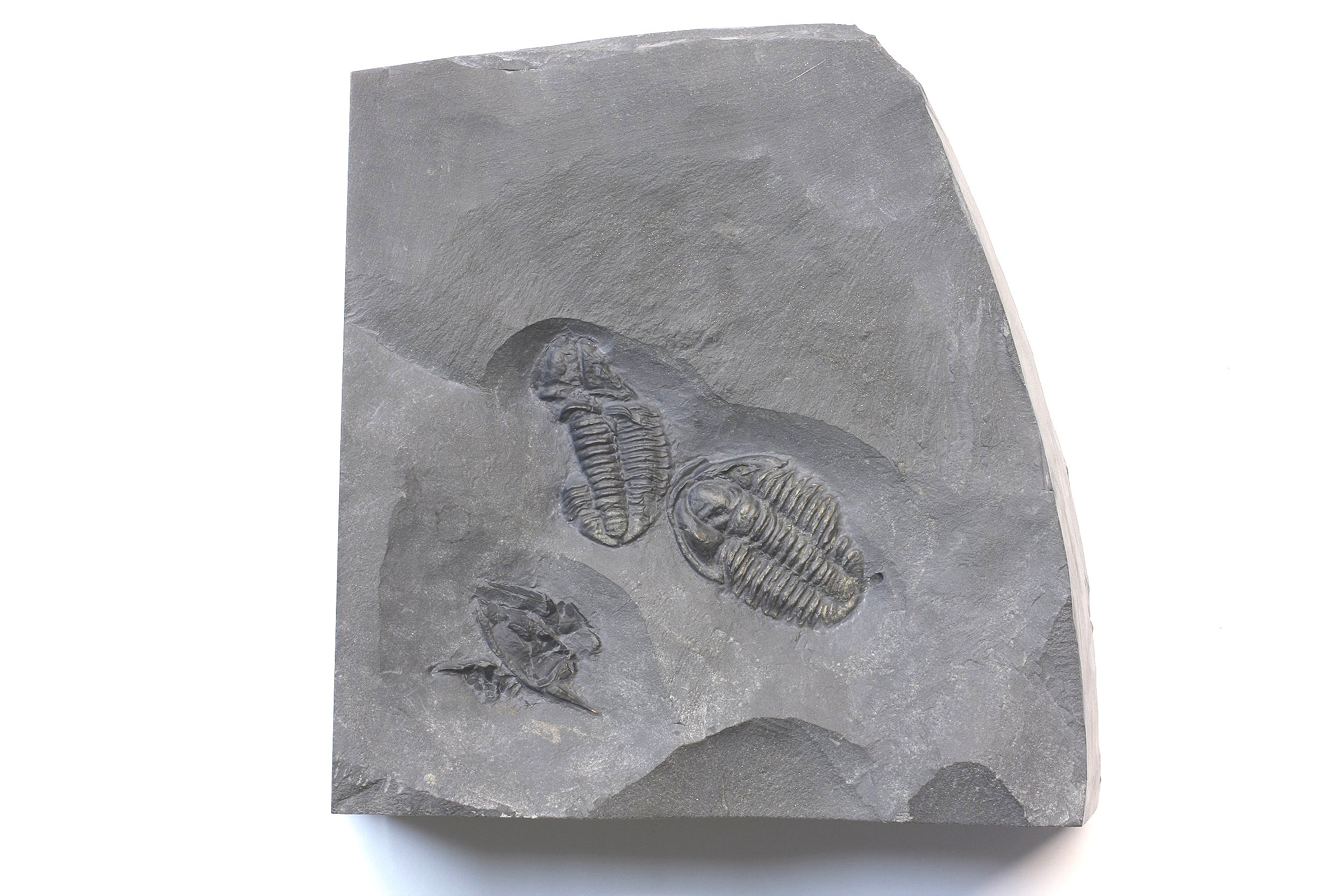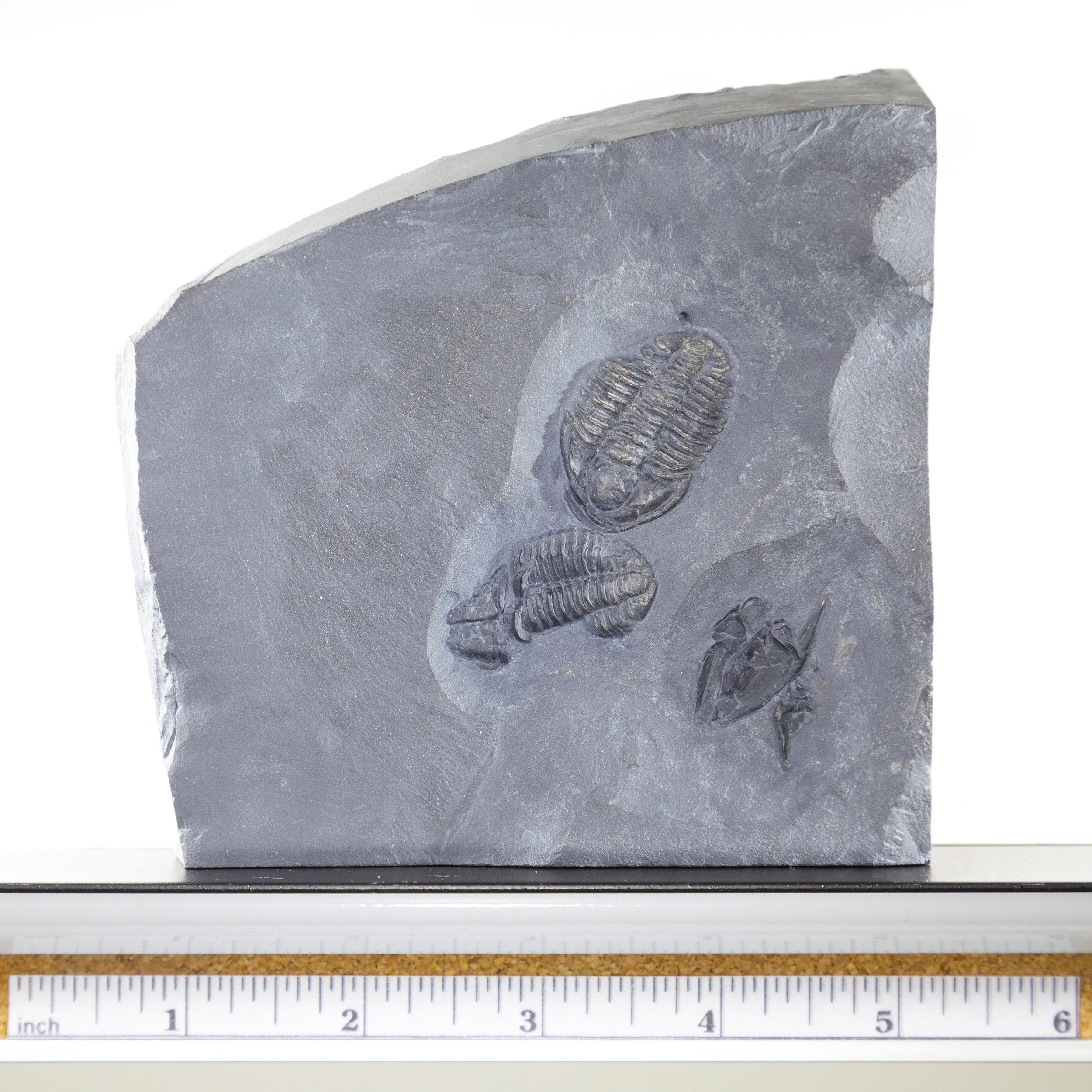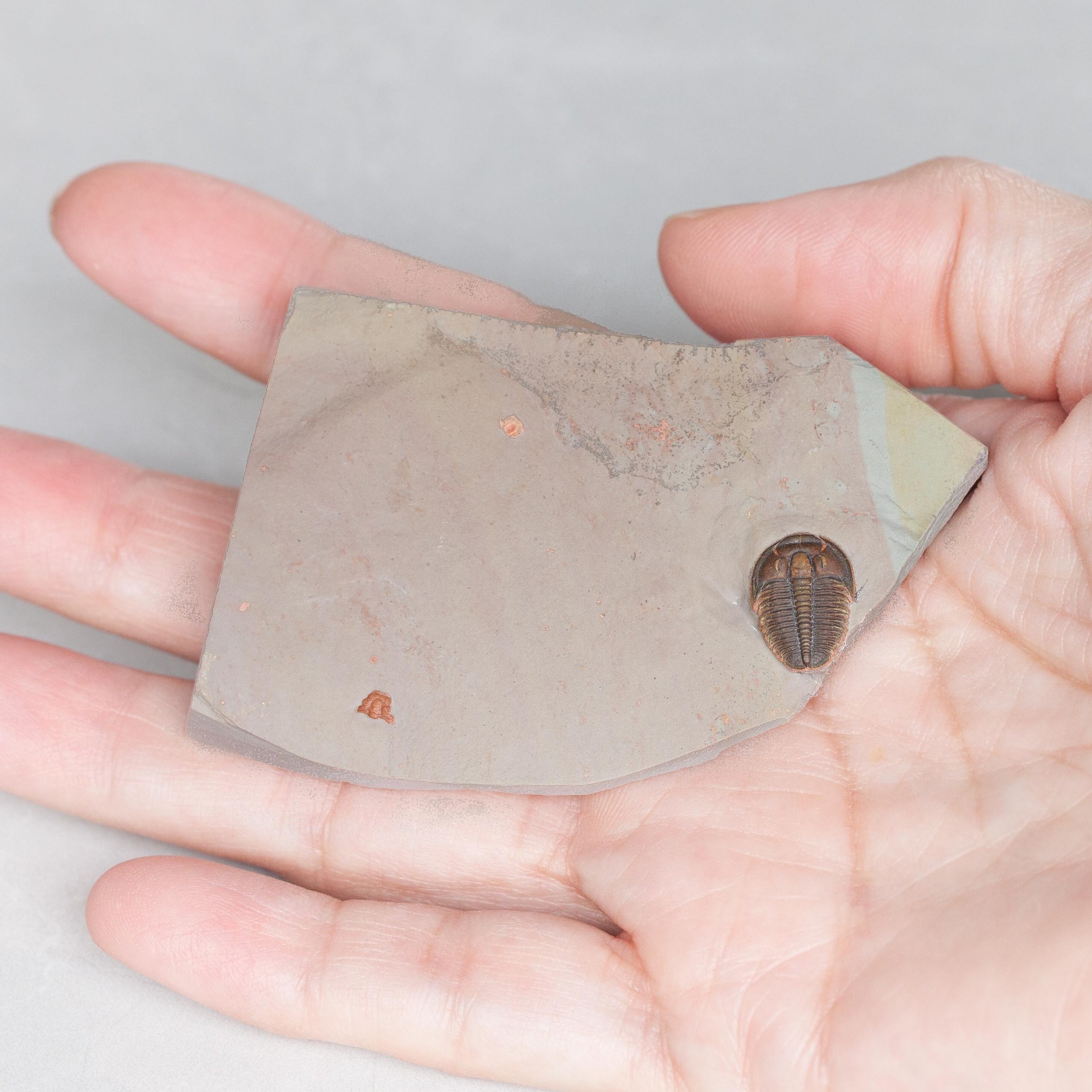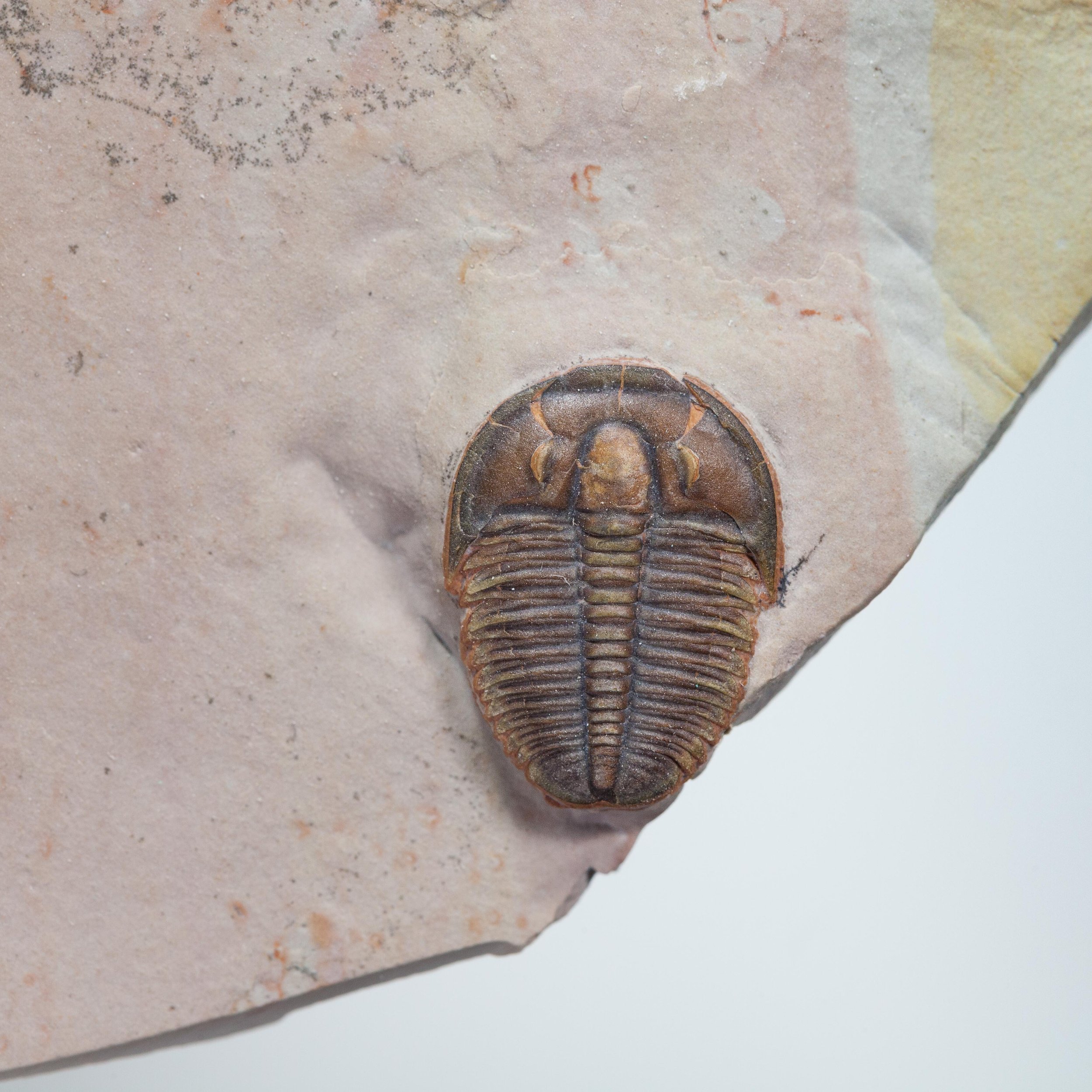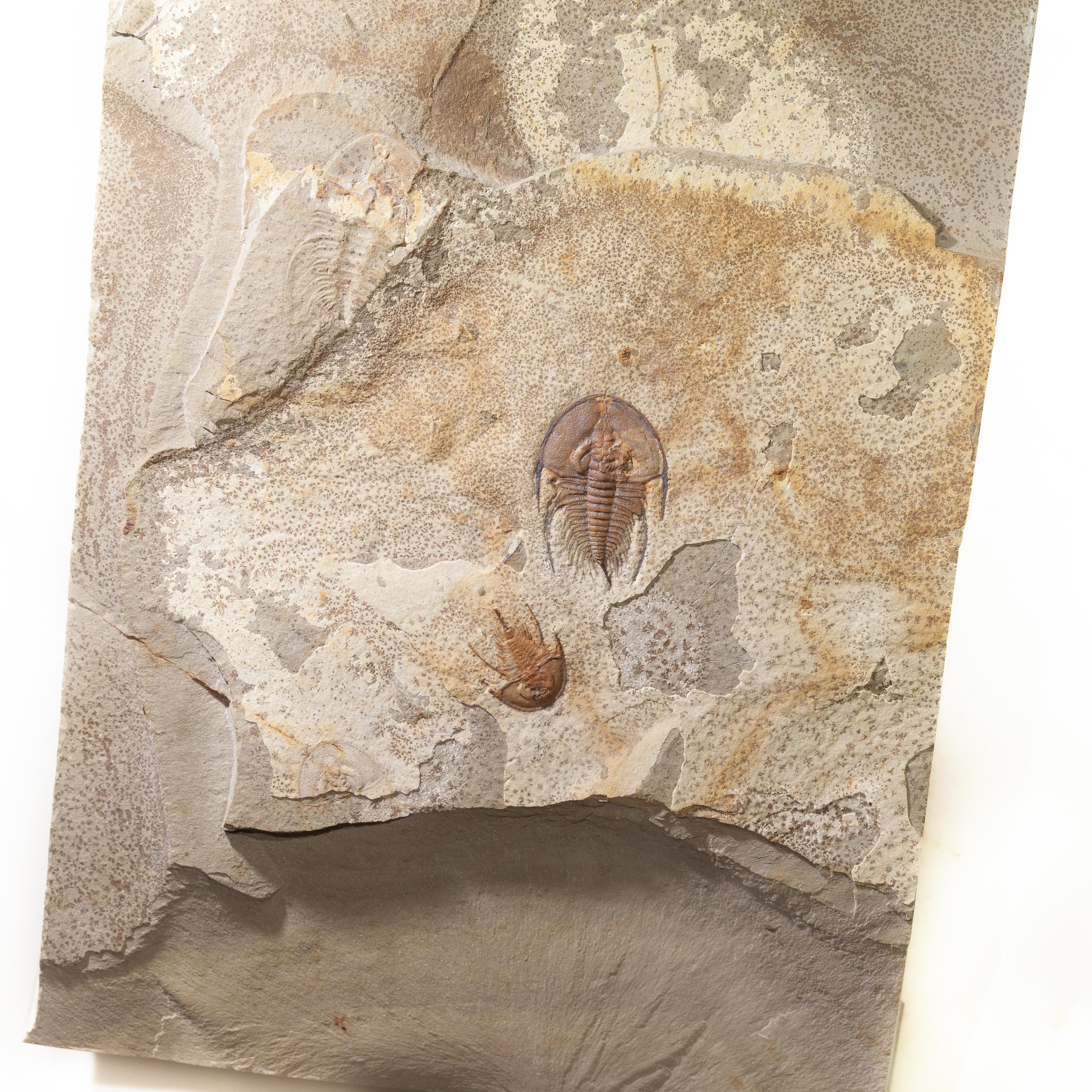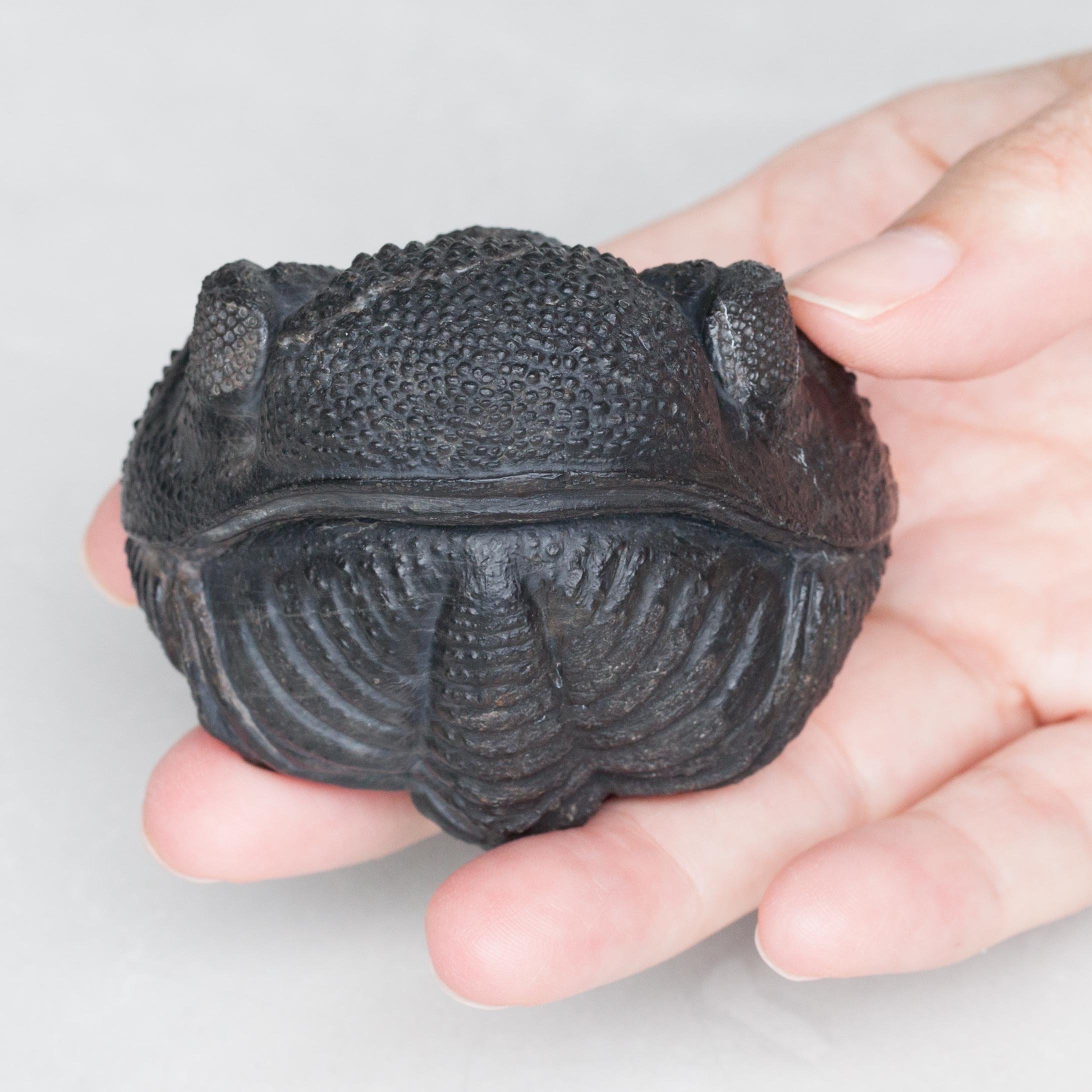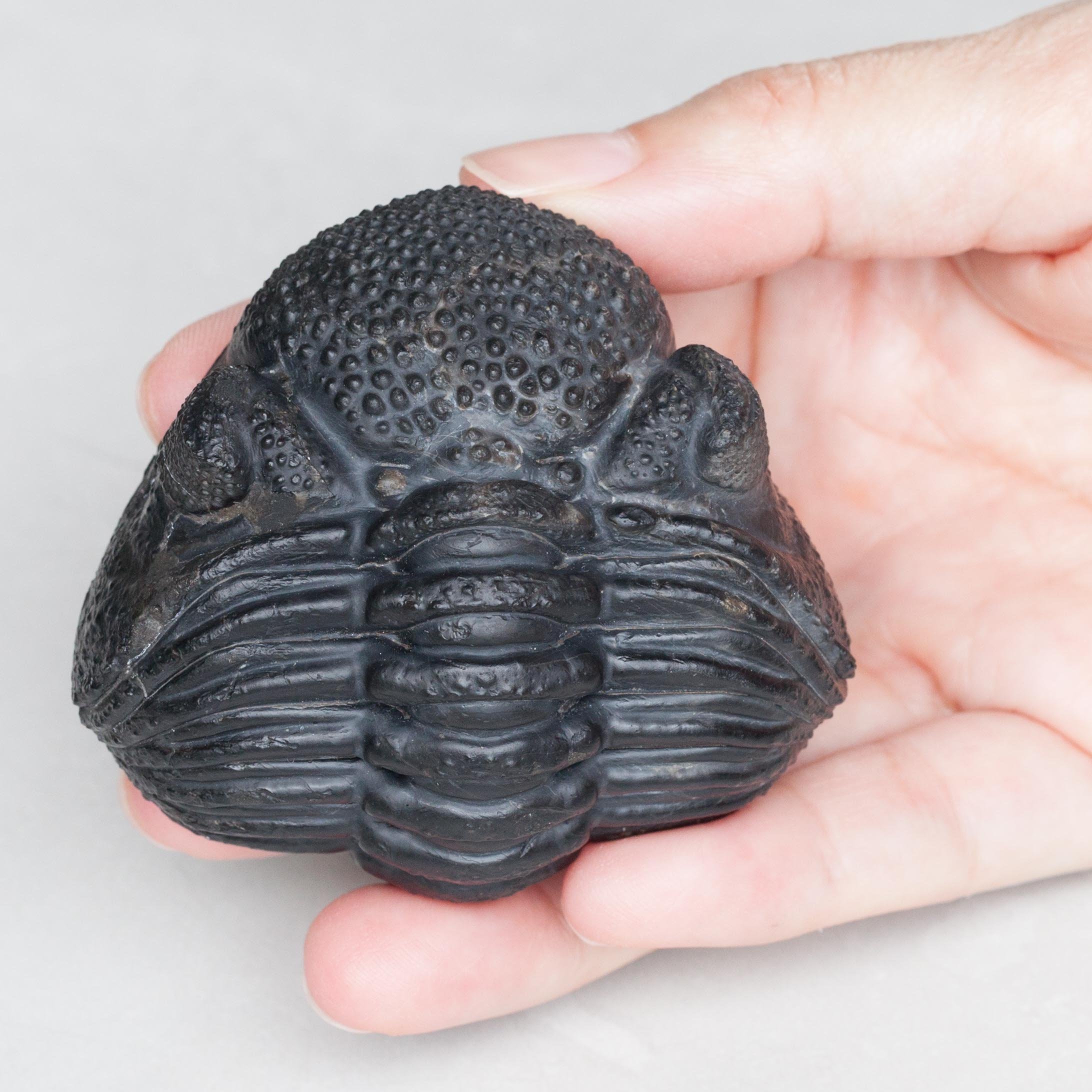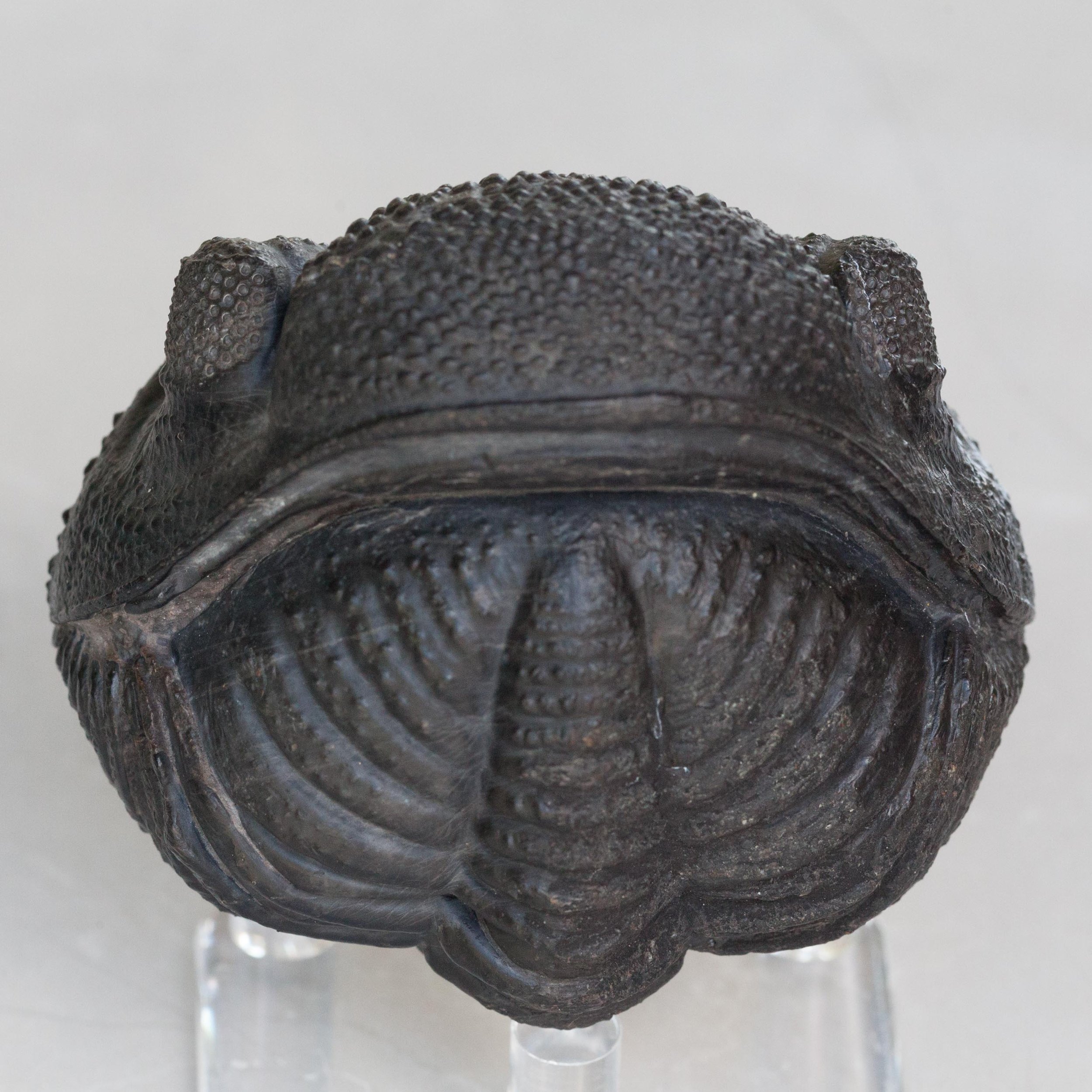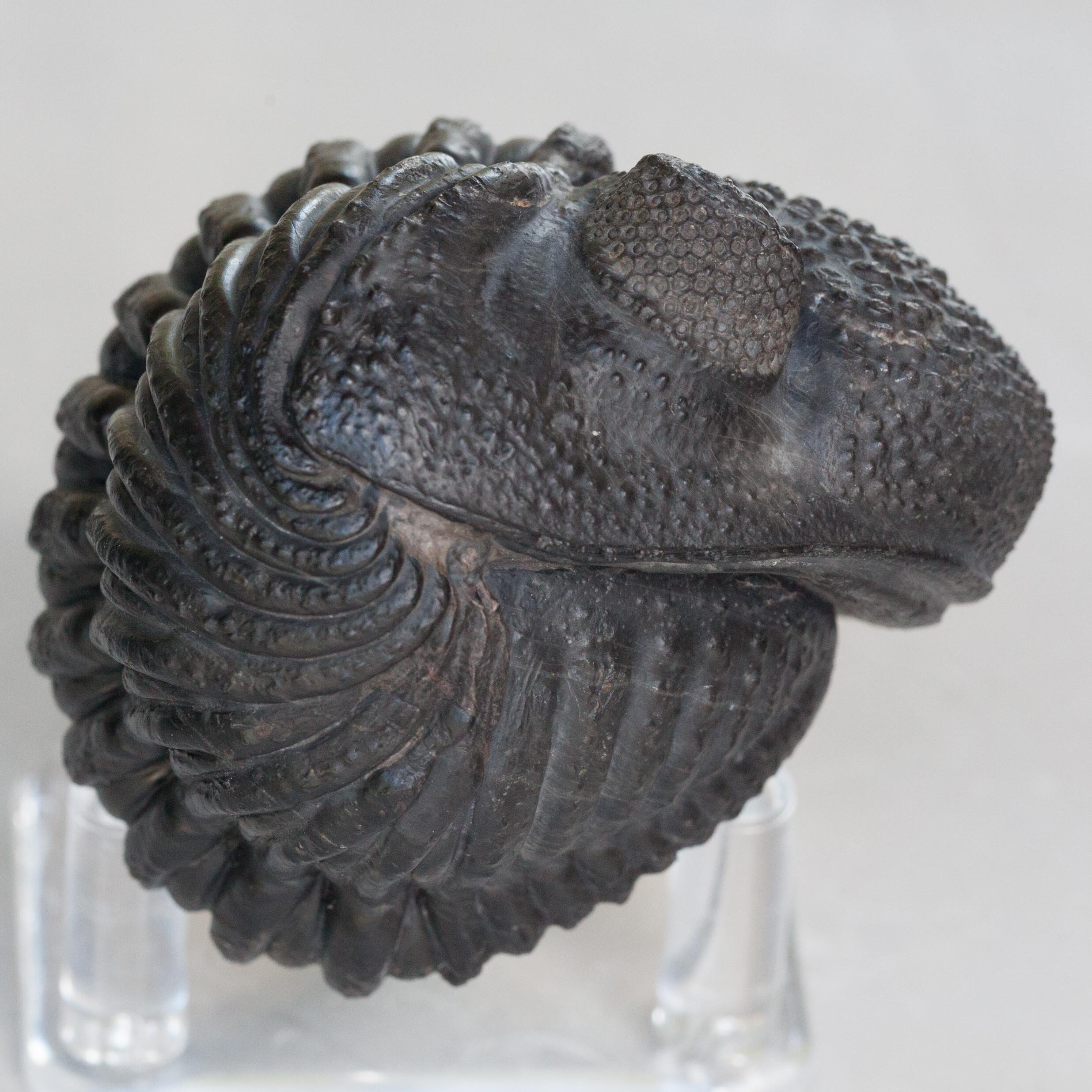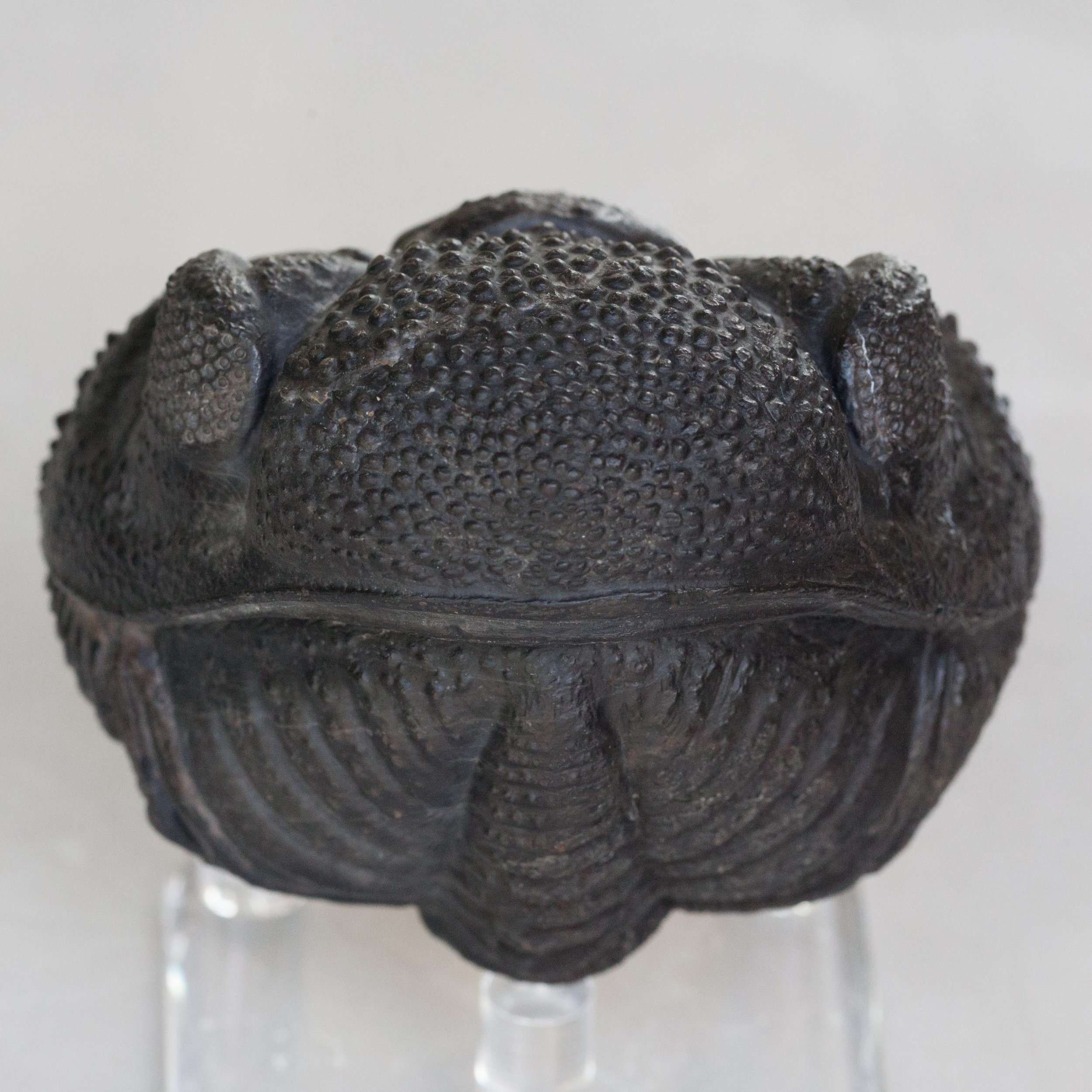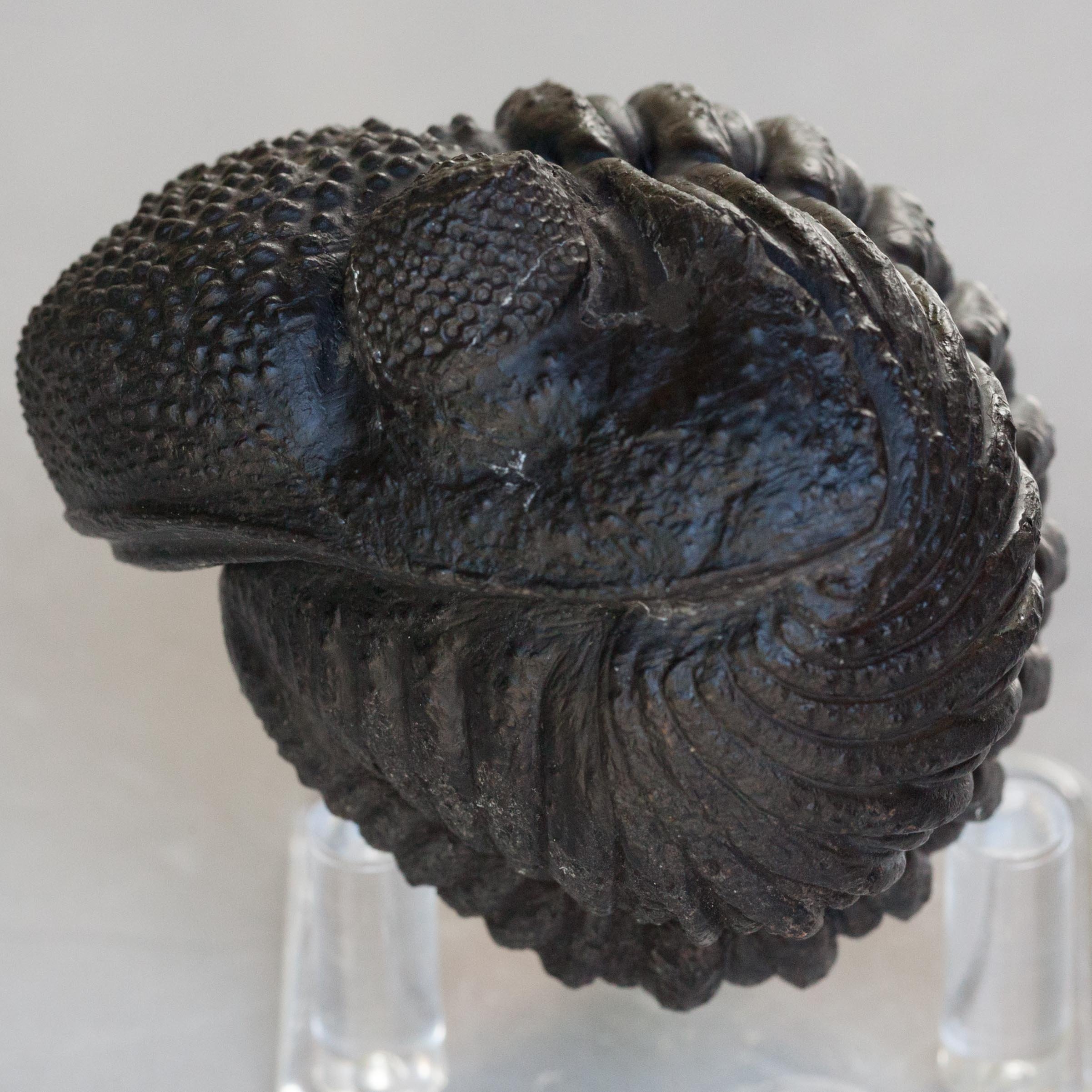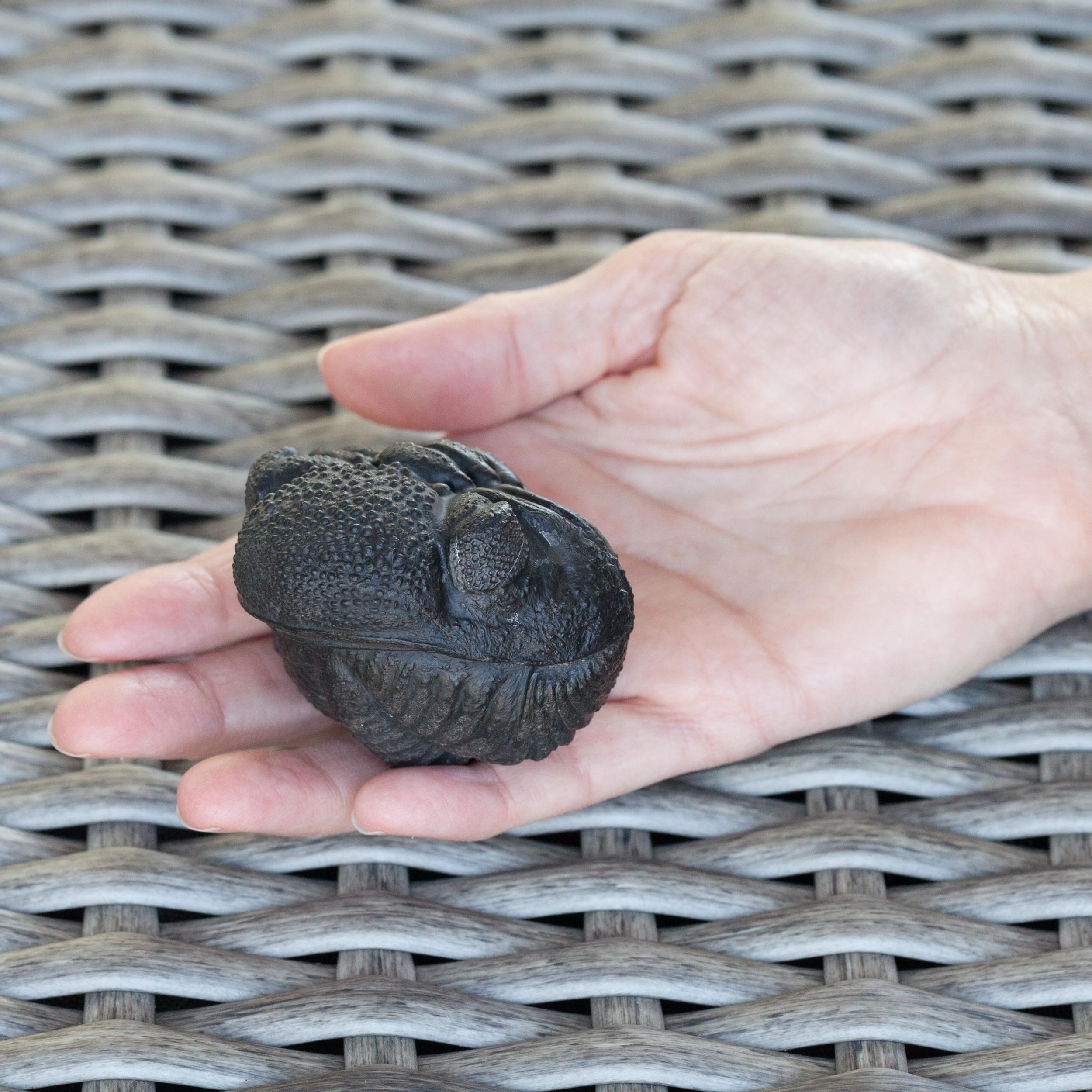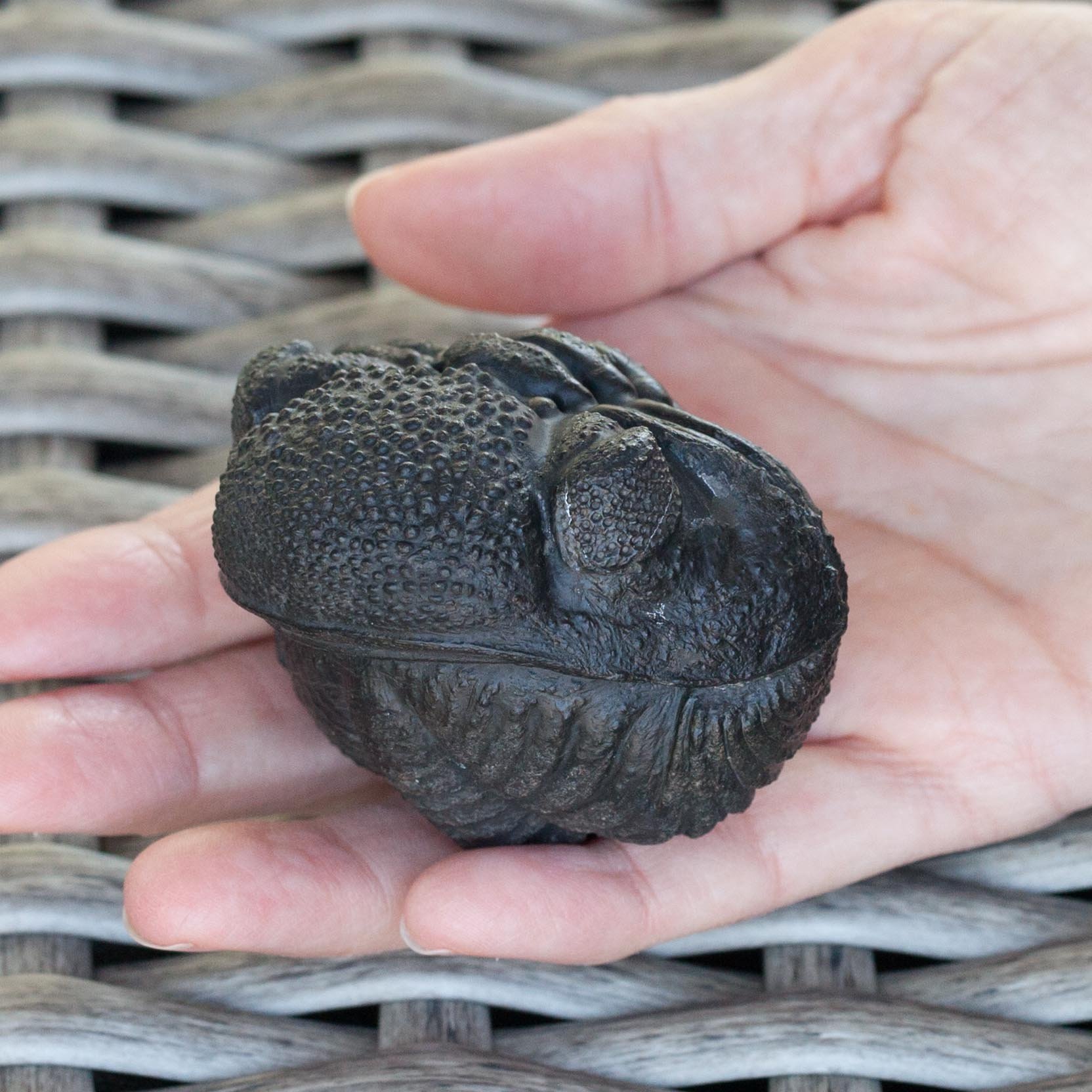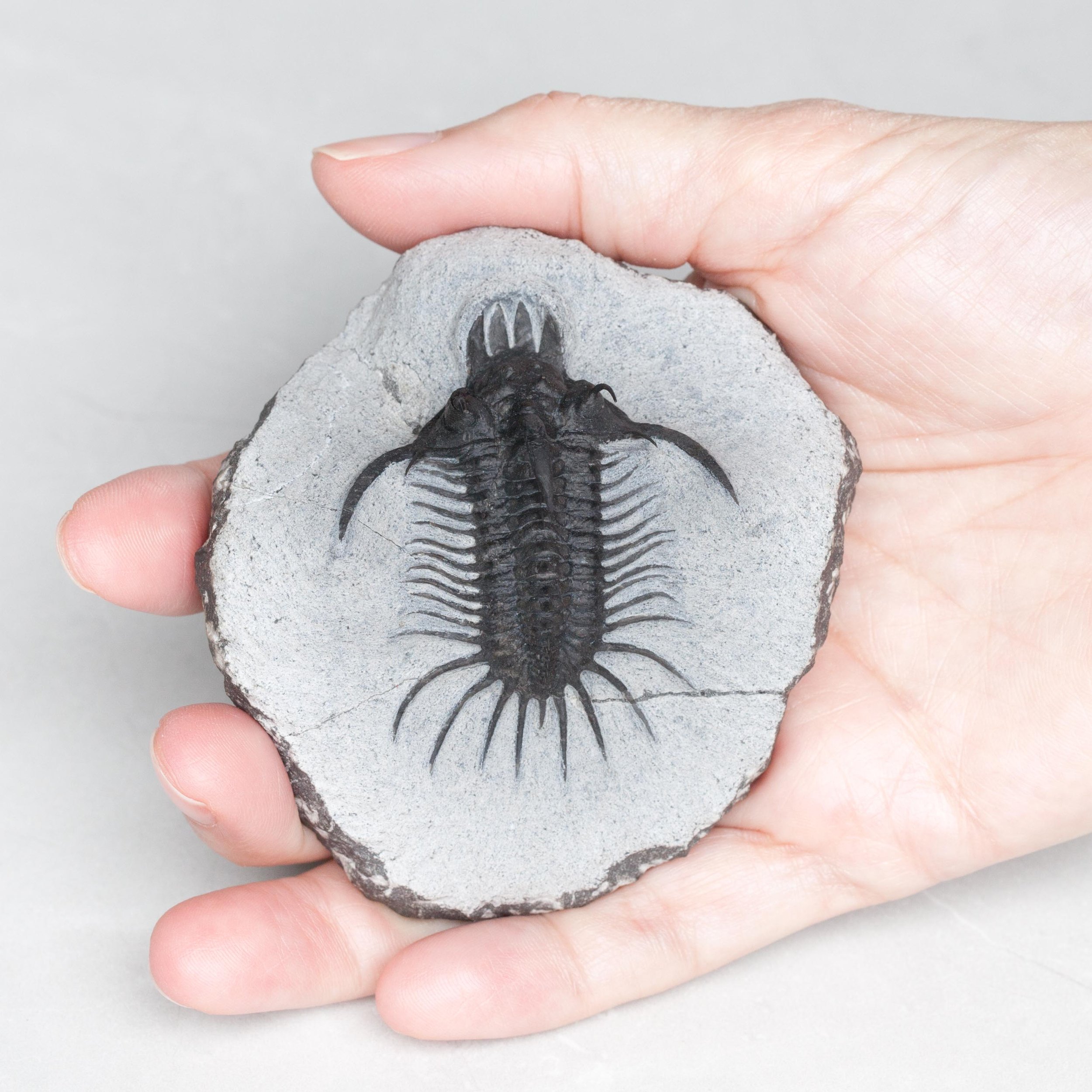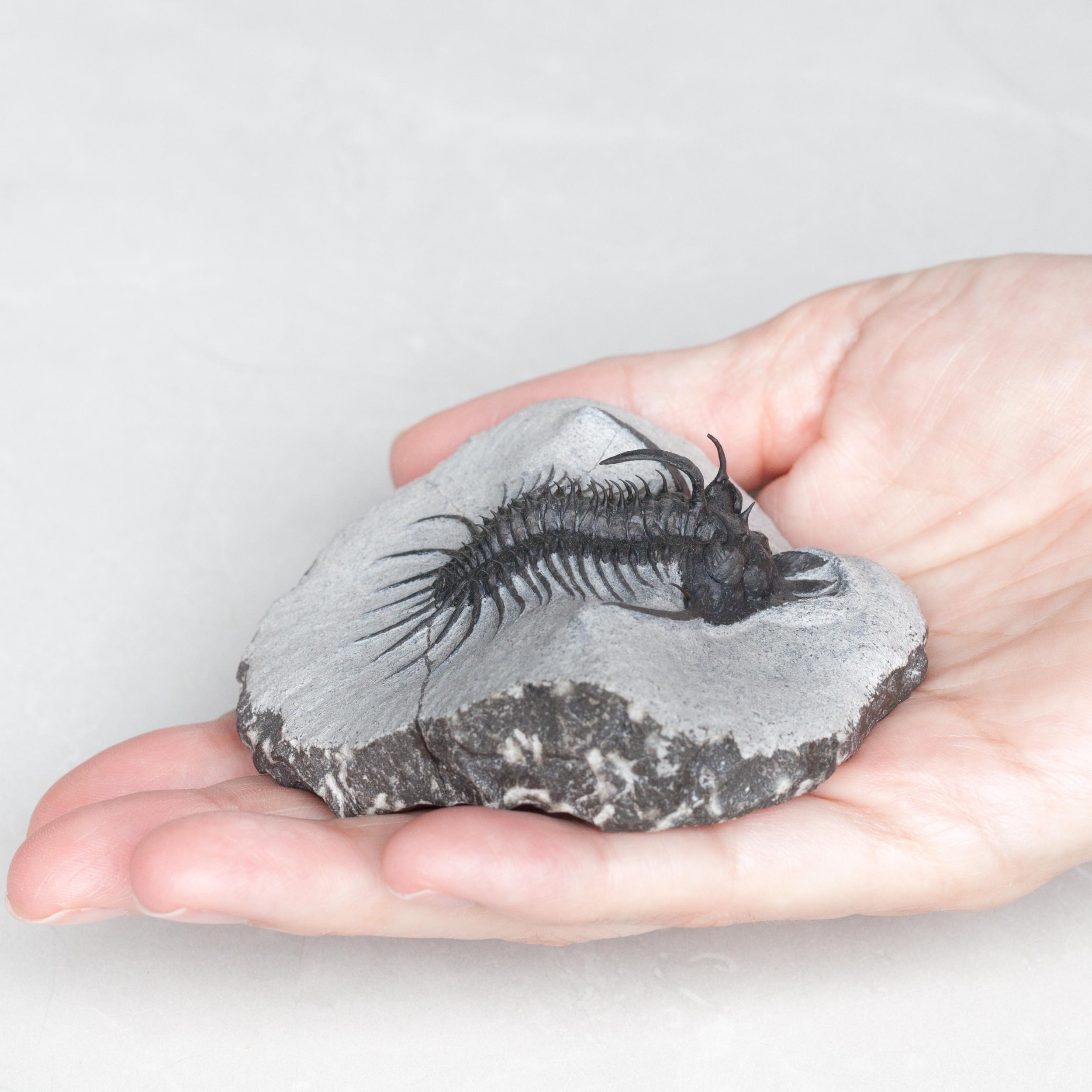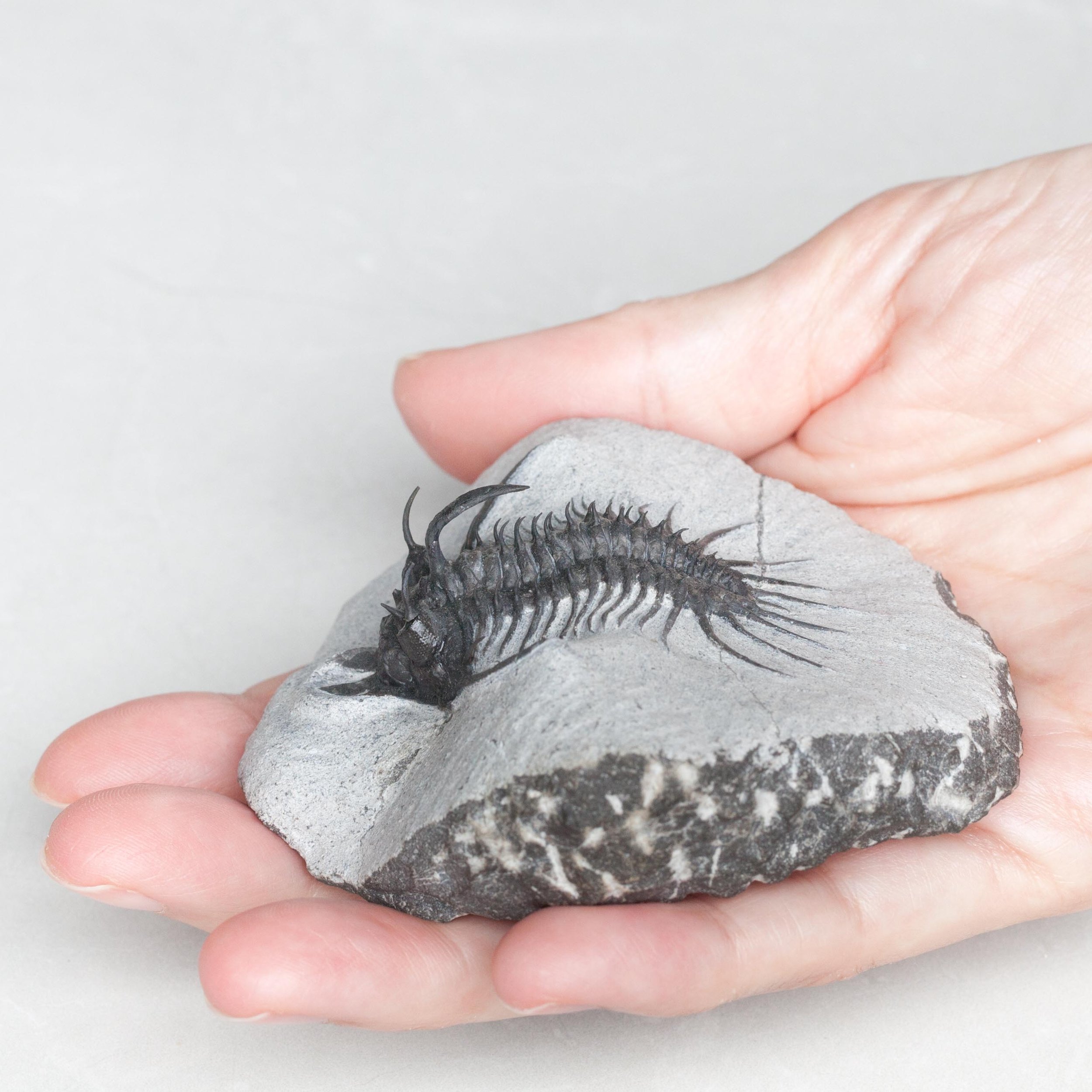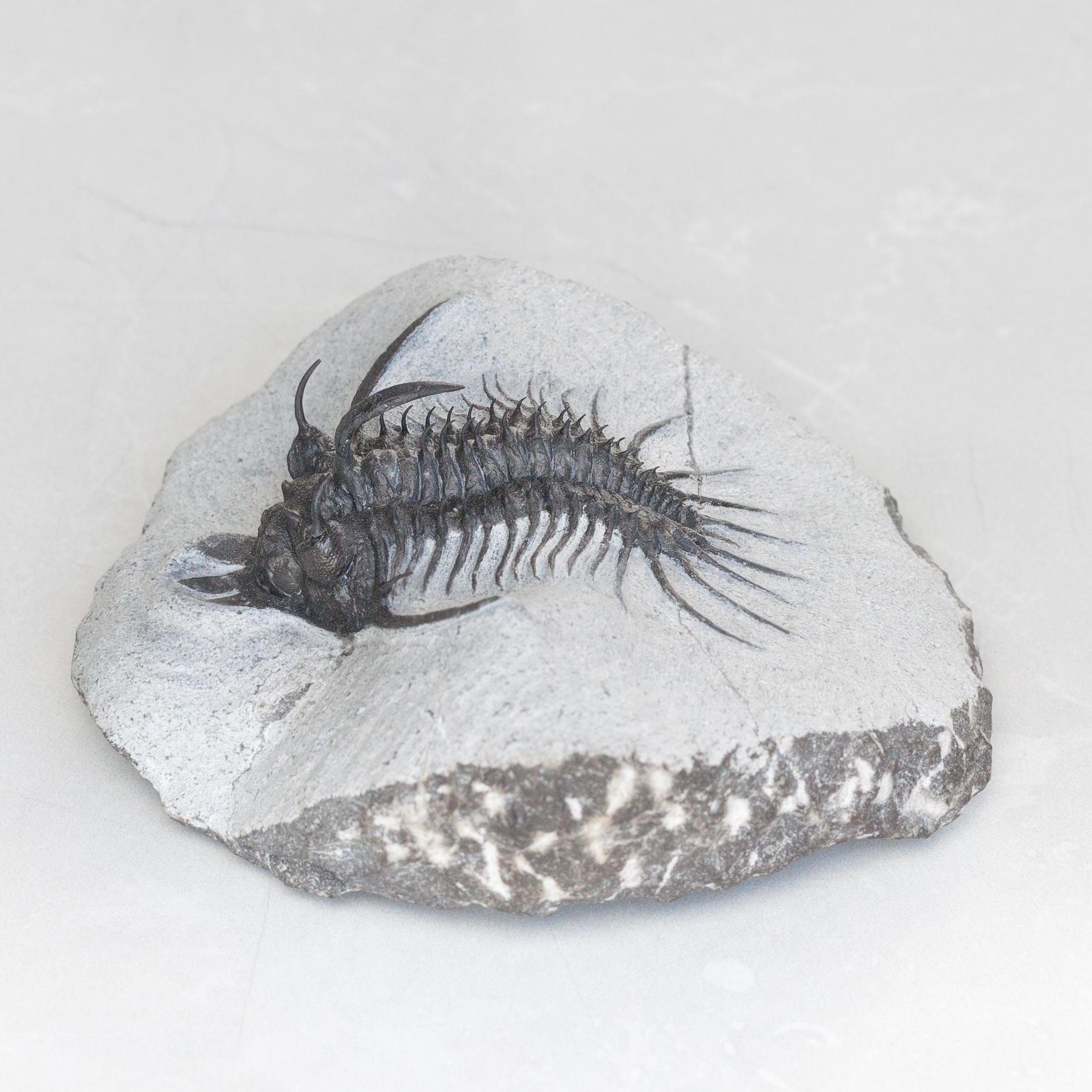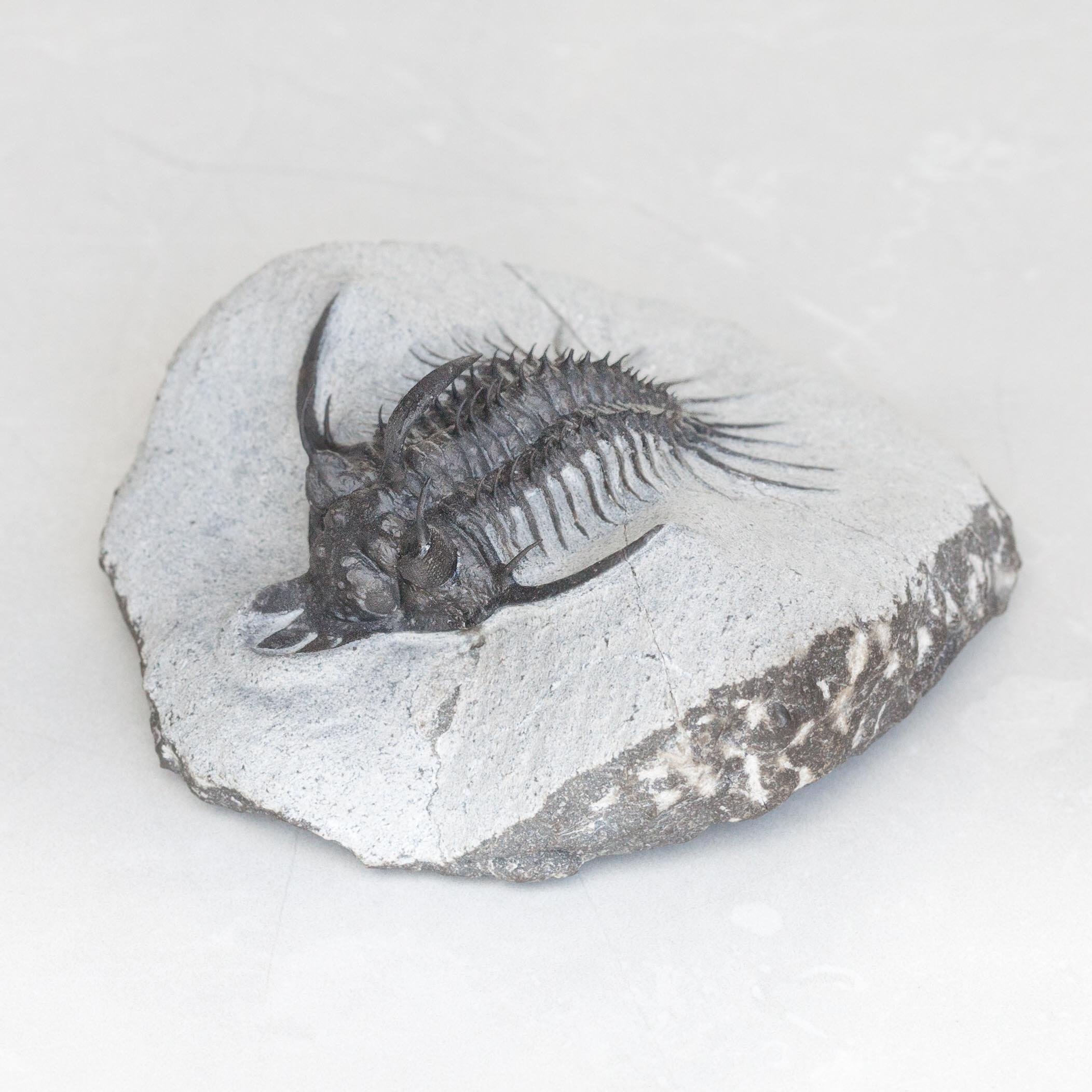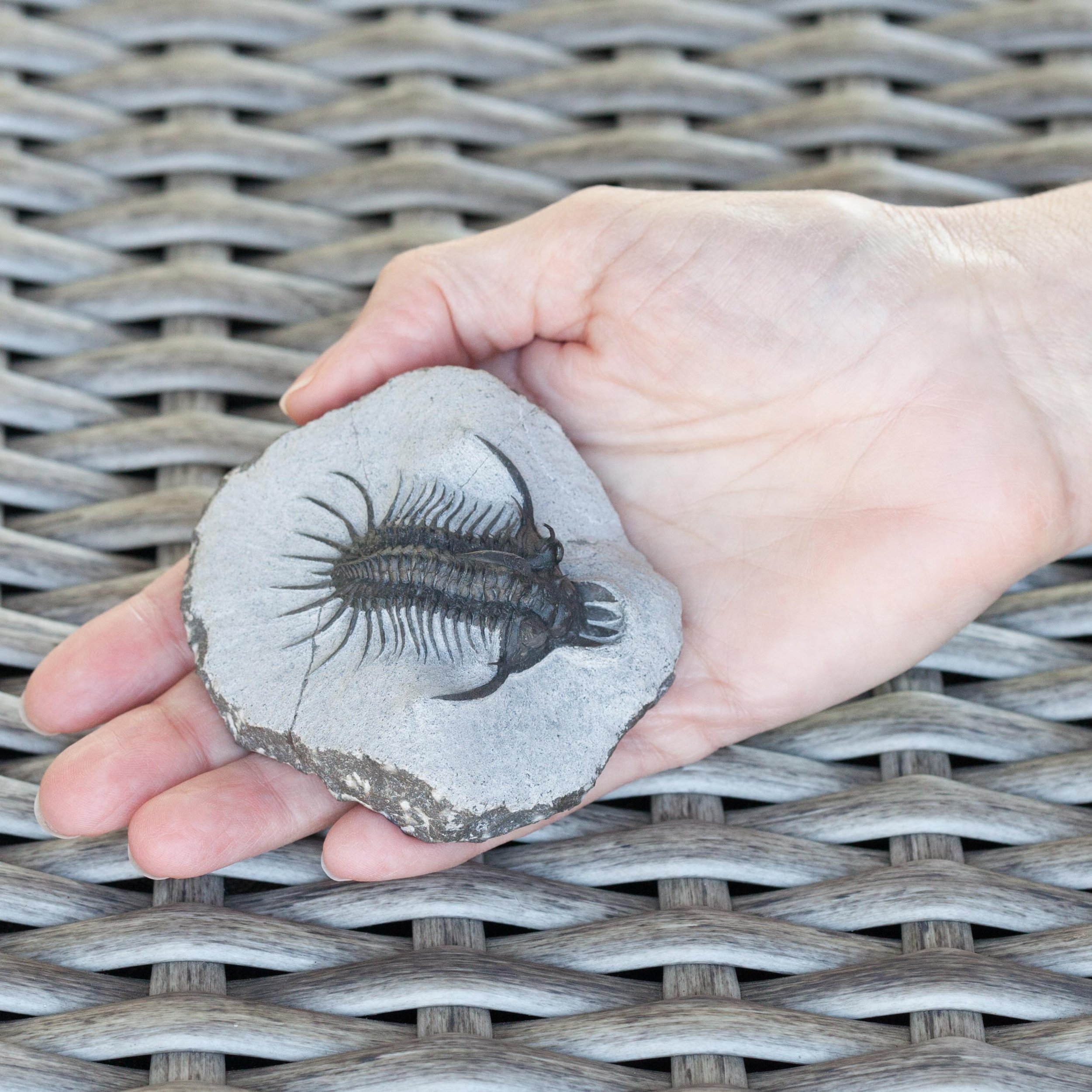Olenellus gilberti
Vendor: Gold Bugs
SKU Number: SQ0863507
A half a billion year old trilobite fossil in mid preparation stage. These early marine arthropods are some of the first complex animals in the fossil record.
This trilobite sits on a very thin, yellowish calcite/aragonite wafer that was likely the result of secondary mineralization processes. These wafers, sometimes referred to as "halos", are extremely delicate and difficult to expose without significantly damaging them. The wafers preserve a high contrast and colorful exoskeleton of these Olenellid trilobites.
Beneath the thin wafer, the trilobite fossil is identical in appearance, but is just a sediment cast matching the surrounding matrix. It is unclear as to whether the dark exoskeleton of the trilobite preserved within the wafer is original to the trilobite fossil, or part of the secondary mineral process. Either way these specimens are highly sought after for their aesthetics. Old collection piece.
Full dimensions are listed below.
Vendor: Gold Bugs
SKU Number: SQ0863507
A half a billion year old trilobite fossil in mid preparation stage. These early marine arthropods are some of the first complex animals in the fossil record.
This trilobite sits on a very thin, yellowish calcite/aragonite wafer that was likely the result of secondary mineralization processes. These wafers, sometimes referred to as "halos", are extremely delicate and difficult to expose without significantly damaging them. The wafers preserve a high contrast and colorful exoskeleton of these Olenellid trilobites.
Beneath the thin wafer, the trilobite fossil is identical in appearance, but is just a sediment cast matching the surrounding matrix. It is unclear as to whether the dark exoskeleton of the trilobite preserved within the wafer is original to the trilobite fossil, or part of the secondary mineral process. Either way these specimens are highly sought after for their aesthetics. Old collection piece.
Full dimensions are listed below.
Vendor: Gold Bugs
SKU Number: SQ0863507
A half a billion year old trilobite fossil in mid preparation stage. These early marine arthropods are some of the first complex animals in the fossil record.
This trilobite sits on a very thin, yellowish calcite/aragonite wafer that was likely the result of secondary mineralization processes. These wafers, sometimes referred to as "halos", are extremely delicate and difficult to expose without significantly damaging them. The wafers preserve a high contrast and colorful exoskeleton of these Olenellid trilobites.
Beneath the thin wafer, the trilobite fossil is identical in appearance, but is just a sediment cast matching the surrounding matrix. It is unclear as to whether the dark exoskeleton of the trilobite preserved within the wafer is original to the trilobite fossil, or part of the secondary mineral process. Either way these specimens are highly sought after for their aesthetics. Old collection piece.
Full dimensions are listed below.
Additional Information
The Pioche Shale is an Early to Middle Cambrian Burgess shale-type Lagerstätte in Nevada that preserves arthropods and worms similar to the Burgess Shale.
In the Eureka area, the Pioche has a variable lithologic character which is most commonly a greenish or grey, calcareous or micaceous shale which may locally be reddish or brown in color with abundant trilobite parts throughout the formation.
Description:
As with most early trilobites, Olenellus has an almost flat exoskeleton, that is only thinly calcified, and has crescent-shaped eye ridges. As part of the suborder Olenellina, Olenellus lacks dorsal sutures. Like all other members of the superfamily Olenelloide, the eye-ridges emerge from the back of the frontal lobe of the central area of the cephalon, that is called glabella. Olenellus also shares the typical character of whole family Olenellidae that the frontal and middle pair of lateral lobes of the glabella are partially merged. This creates two very typical, isolated slits. It can be distinguished from the other two genera in the family, Mesolenellus and Mesonacis, because the angle in the back rim of the cephalon is less than 15°, making the head approximately semi-circular. The genal spines are reaching back no further than the 6th thorax segment, making them 4-5 times as long as the most backward lobe of the glabella. The thorax is 4-4½ times wider that the axis, measured at the 3rd segment. The base of the spine on the 15th thorax segment is almost as wide as the axis itself.

